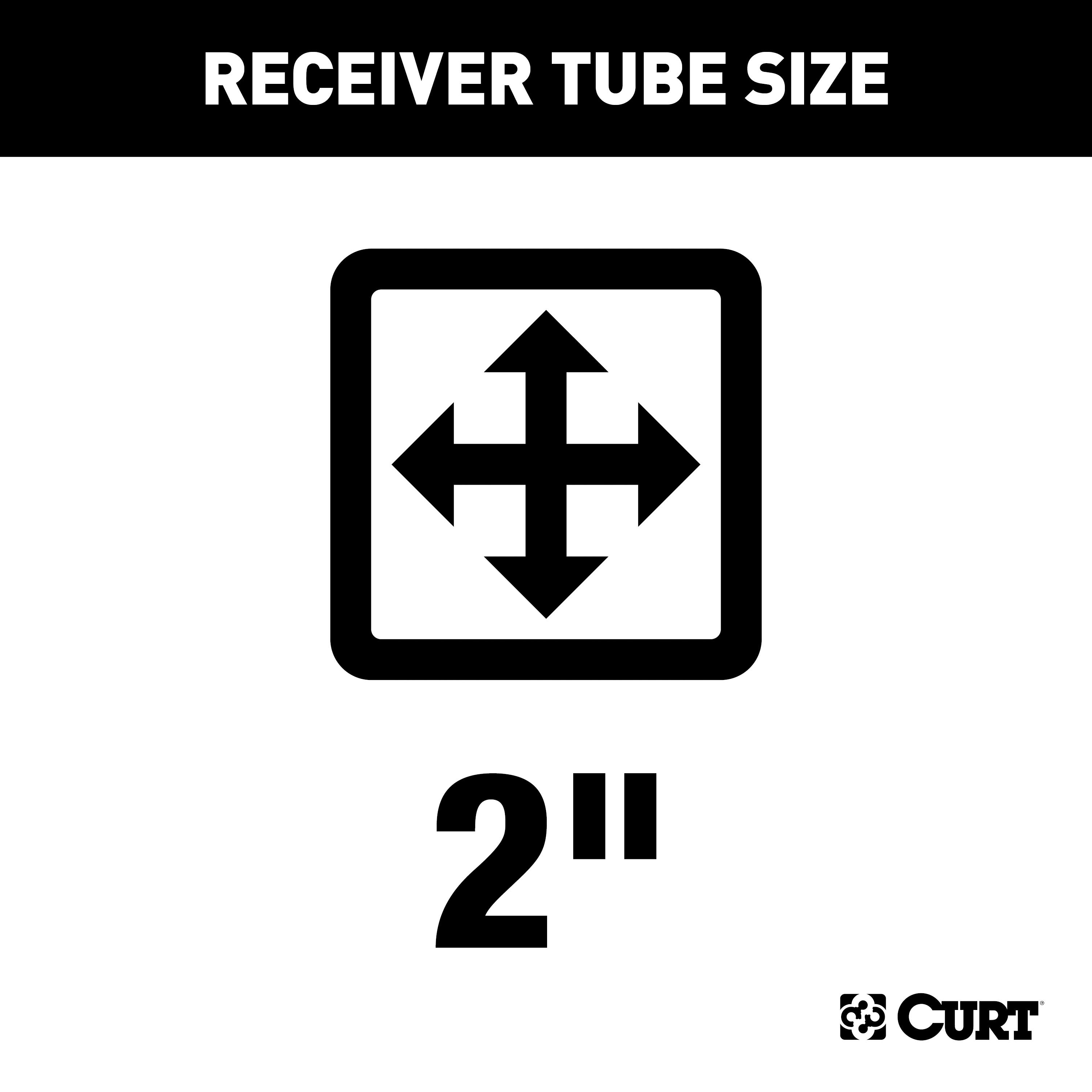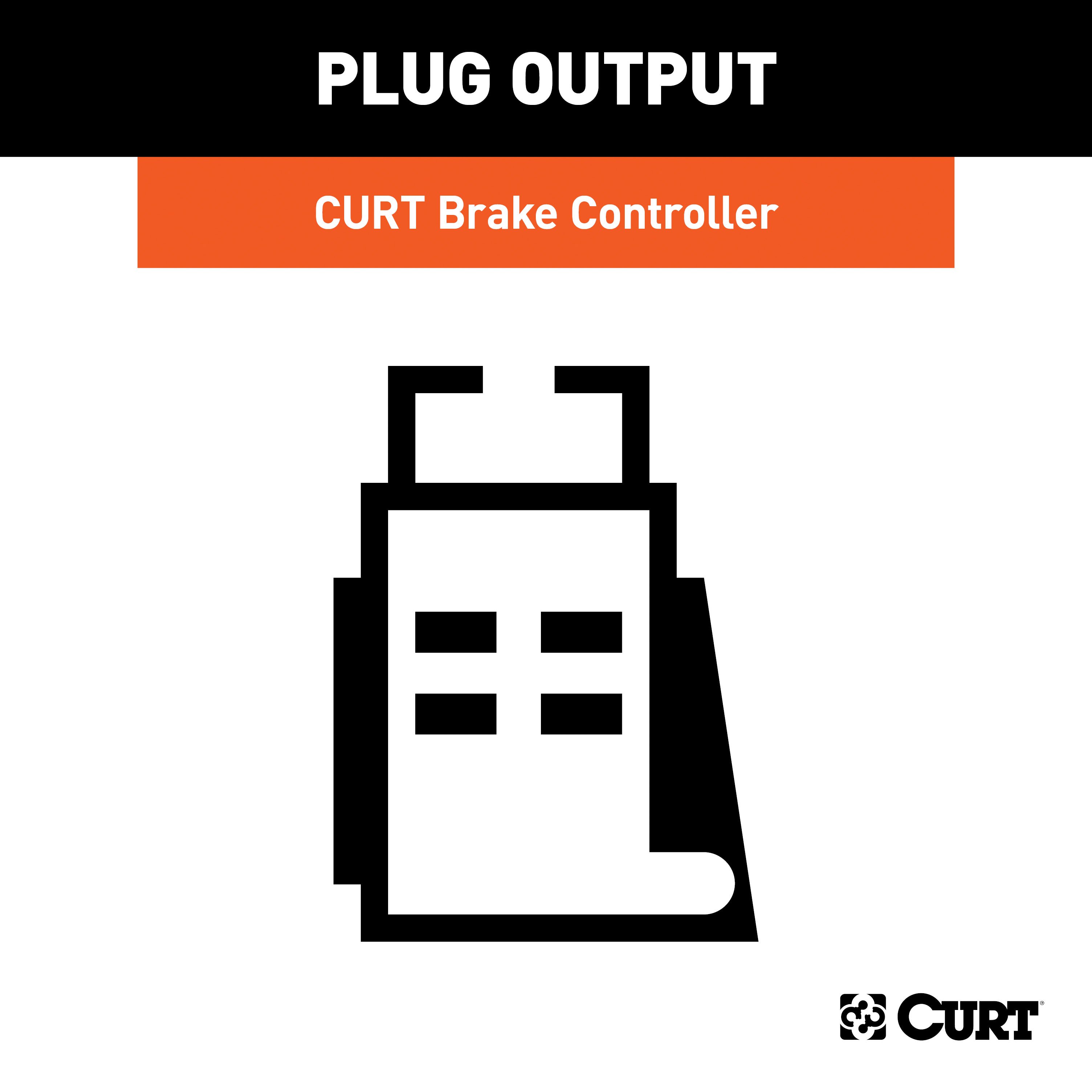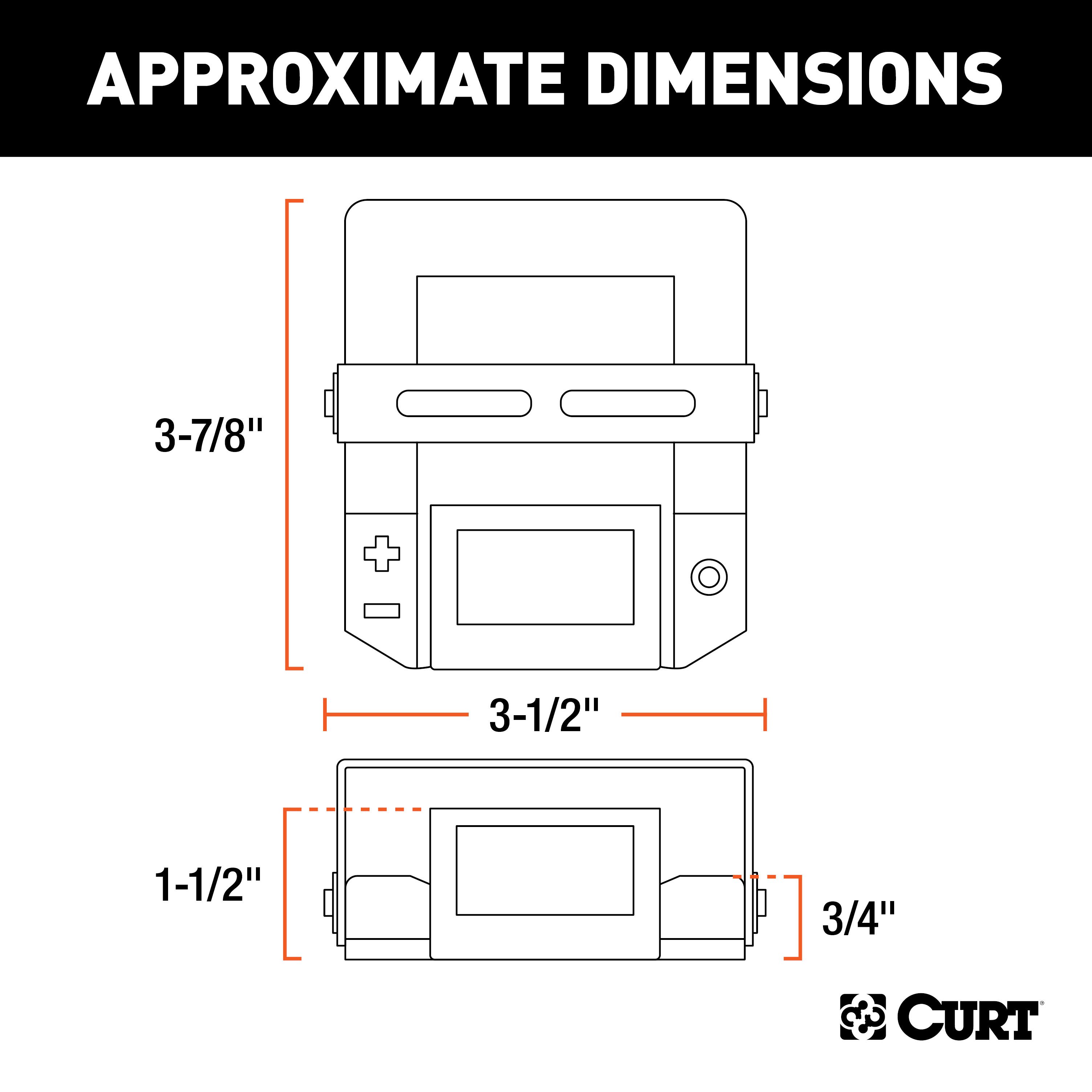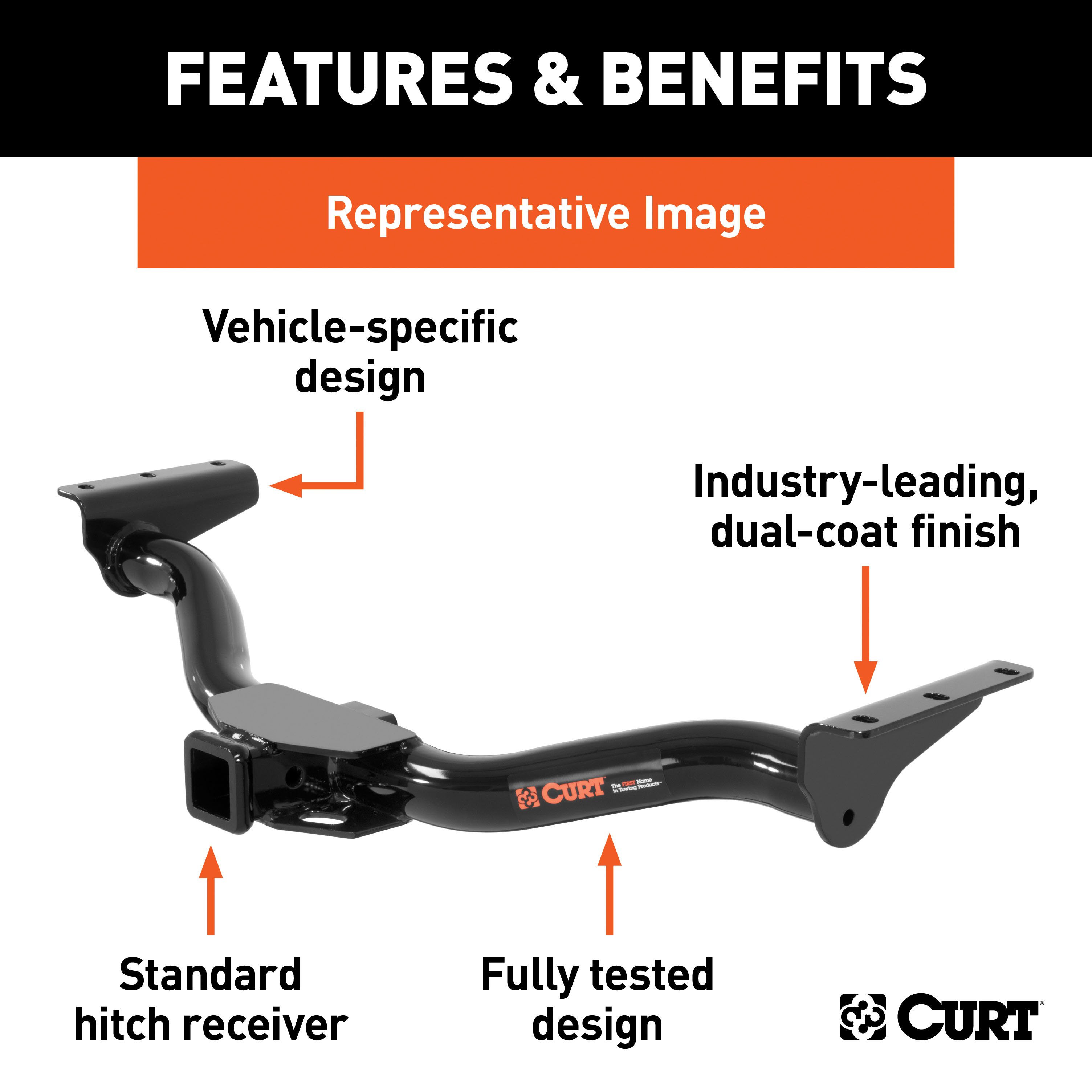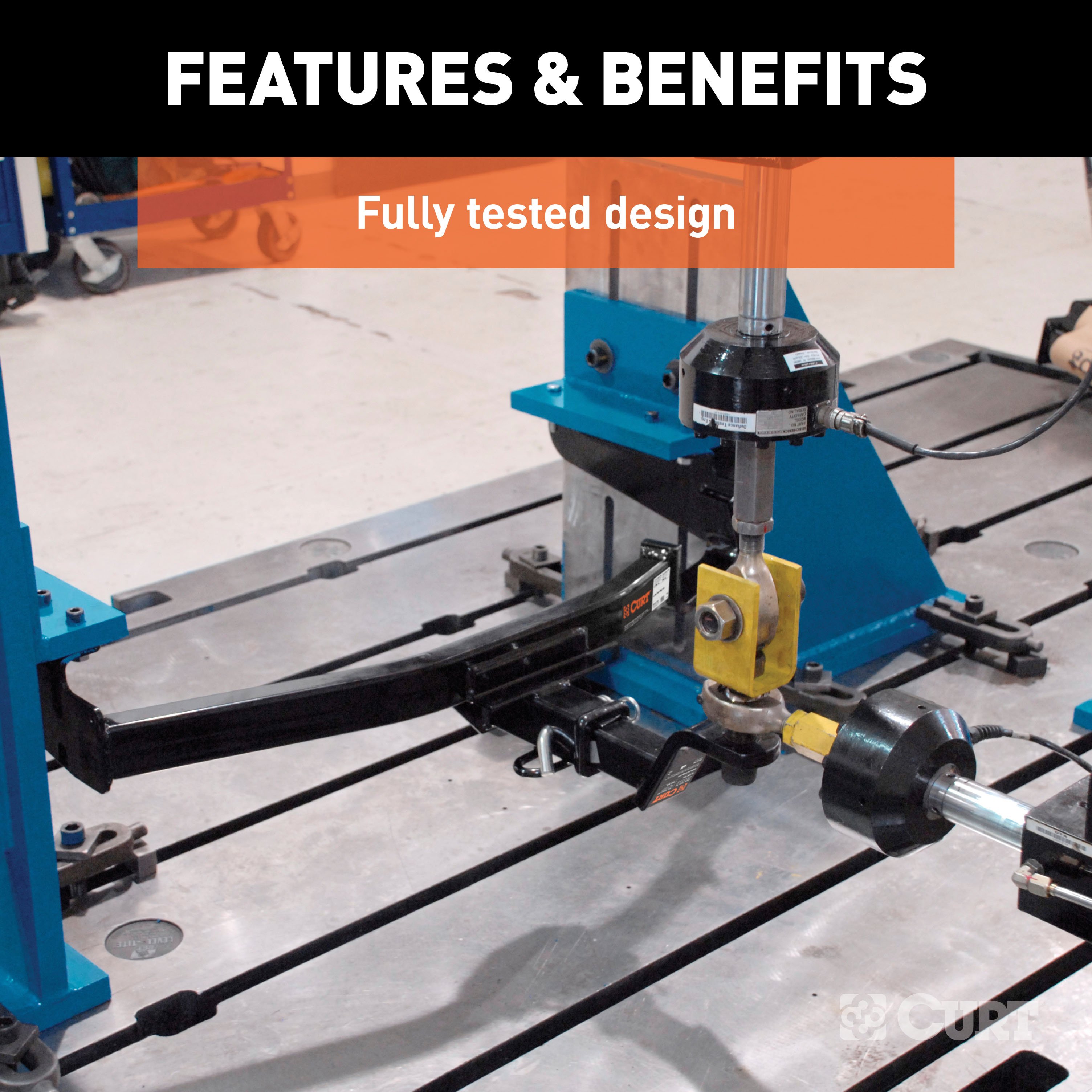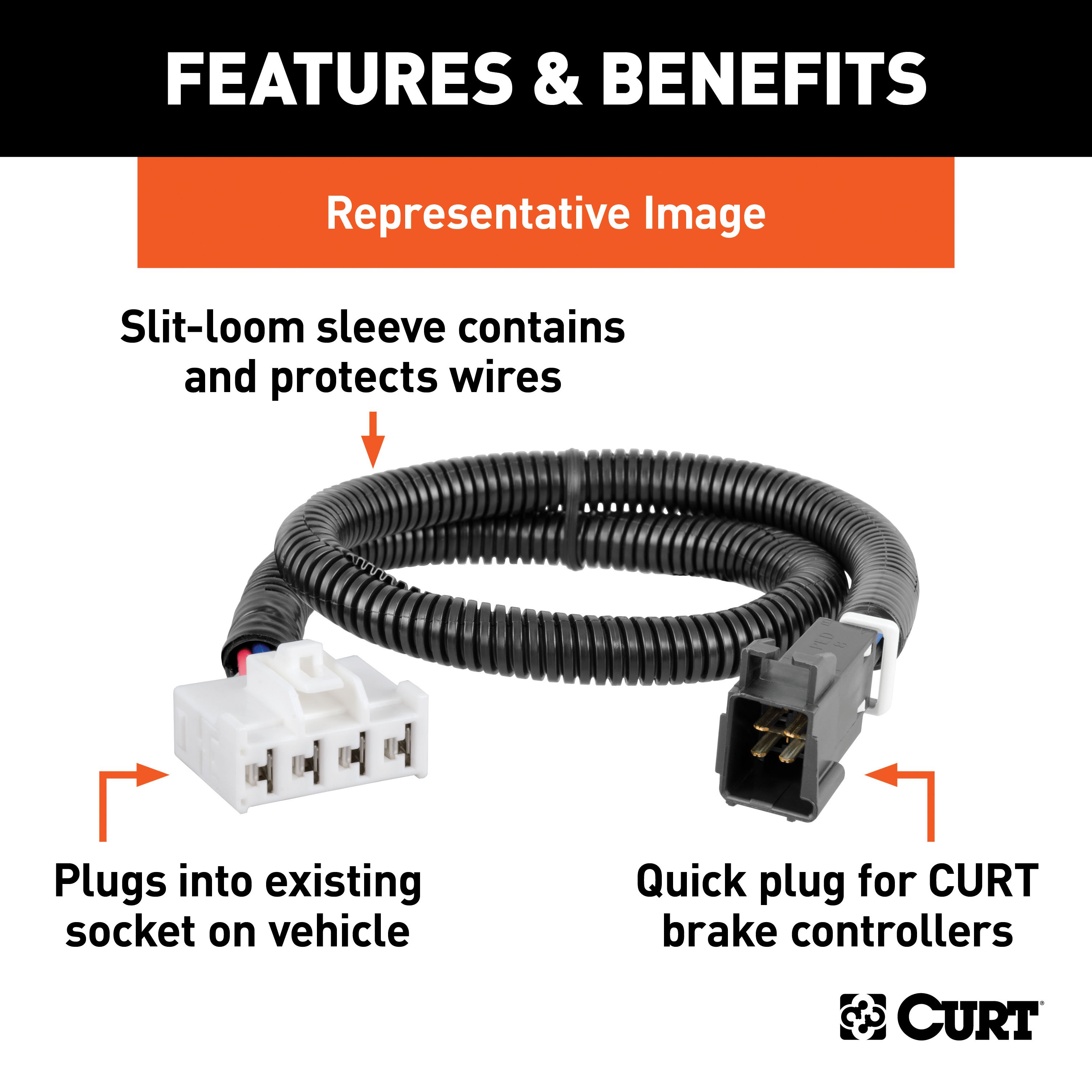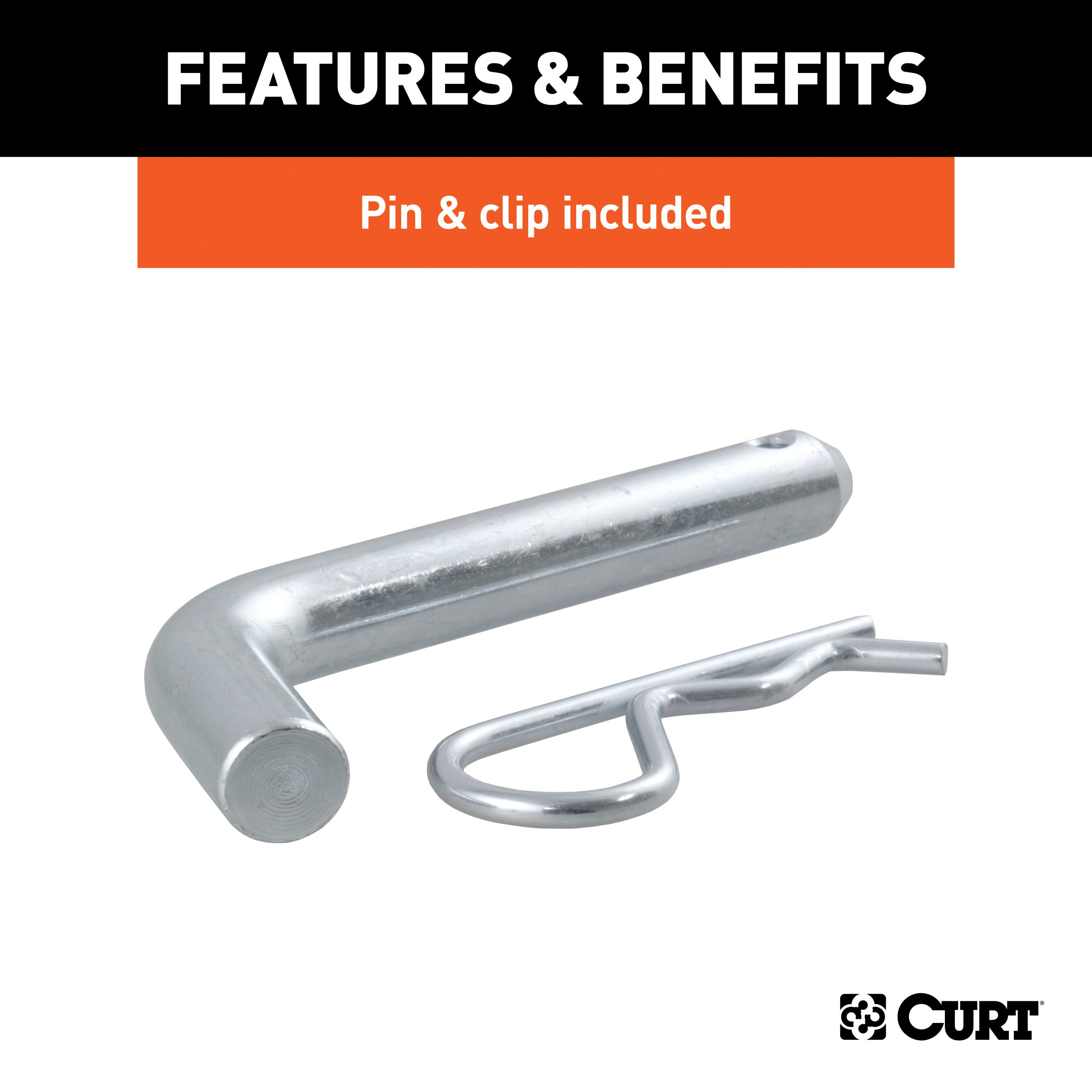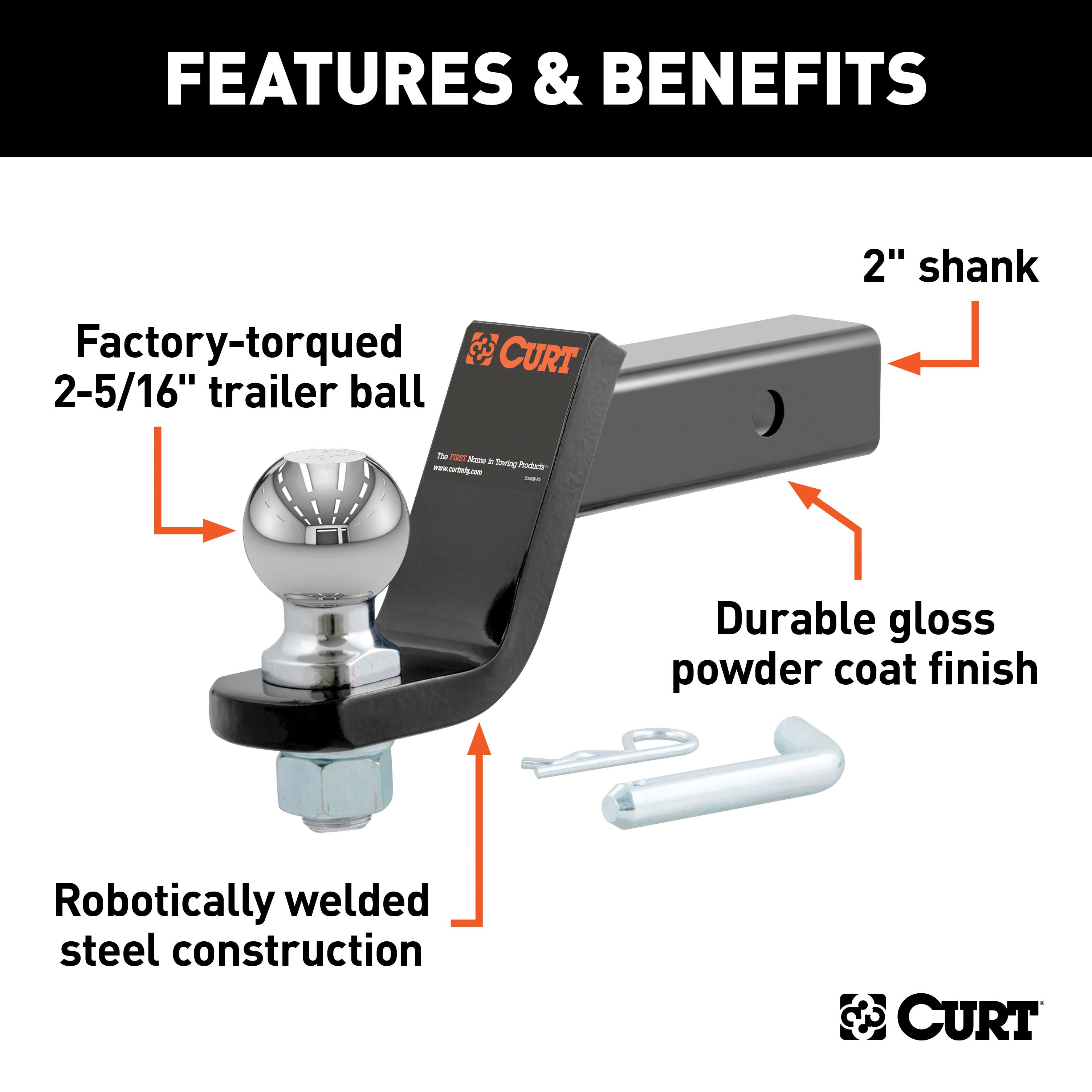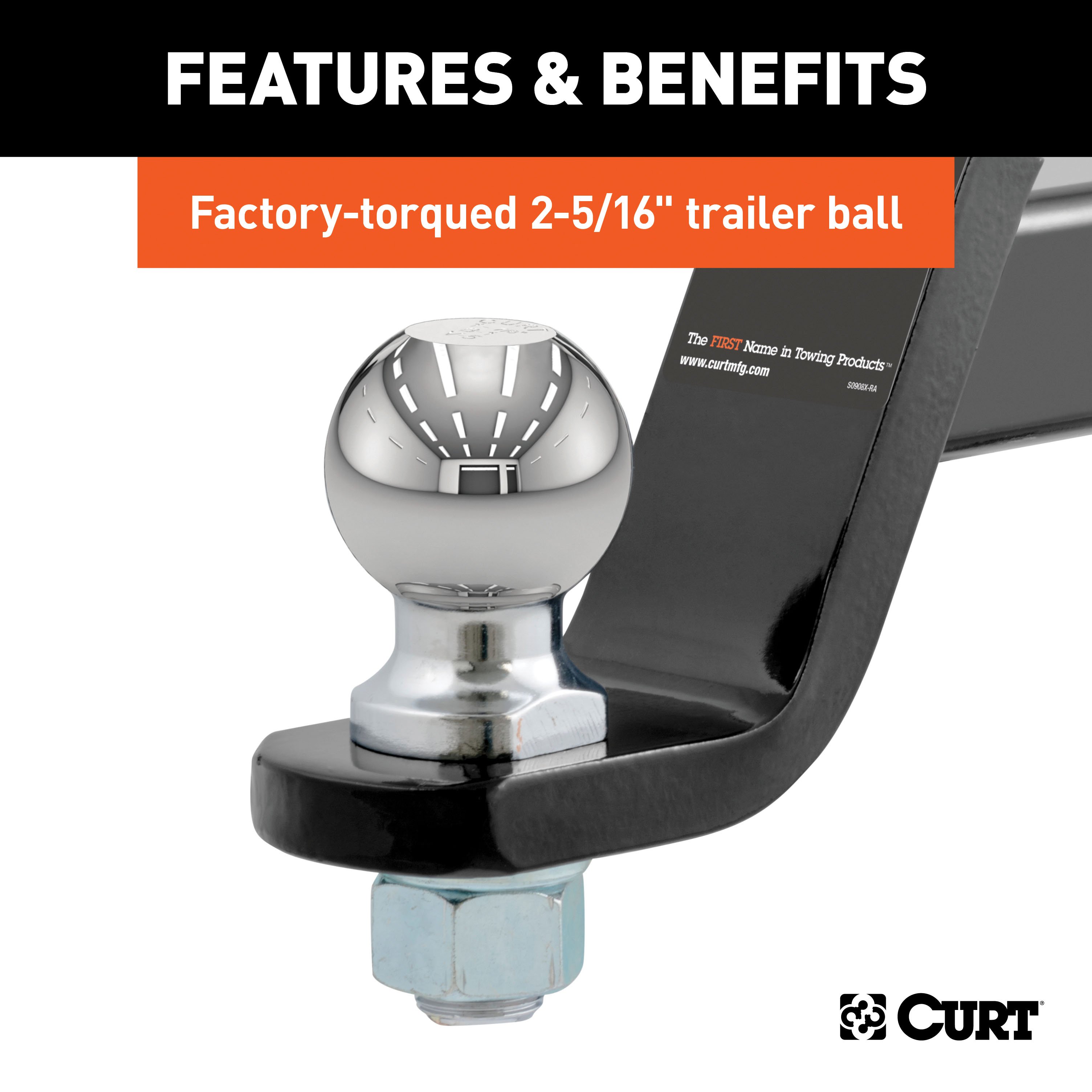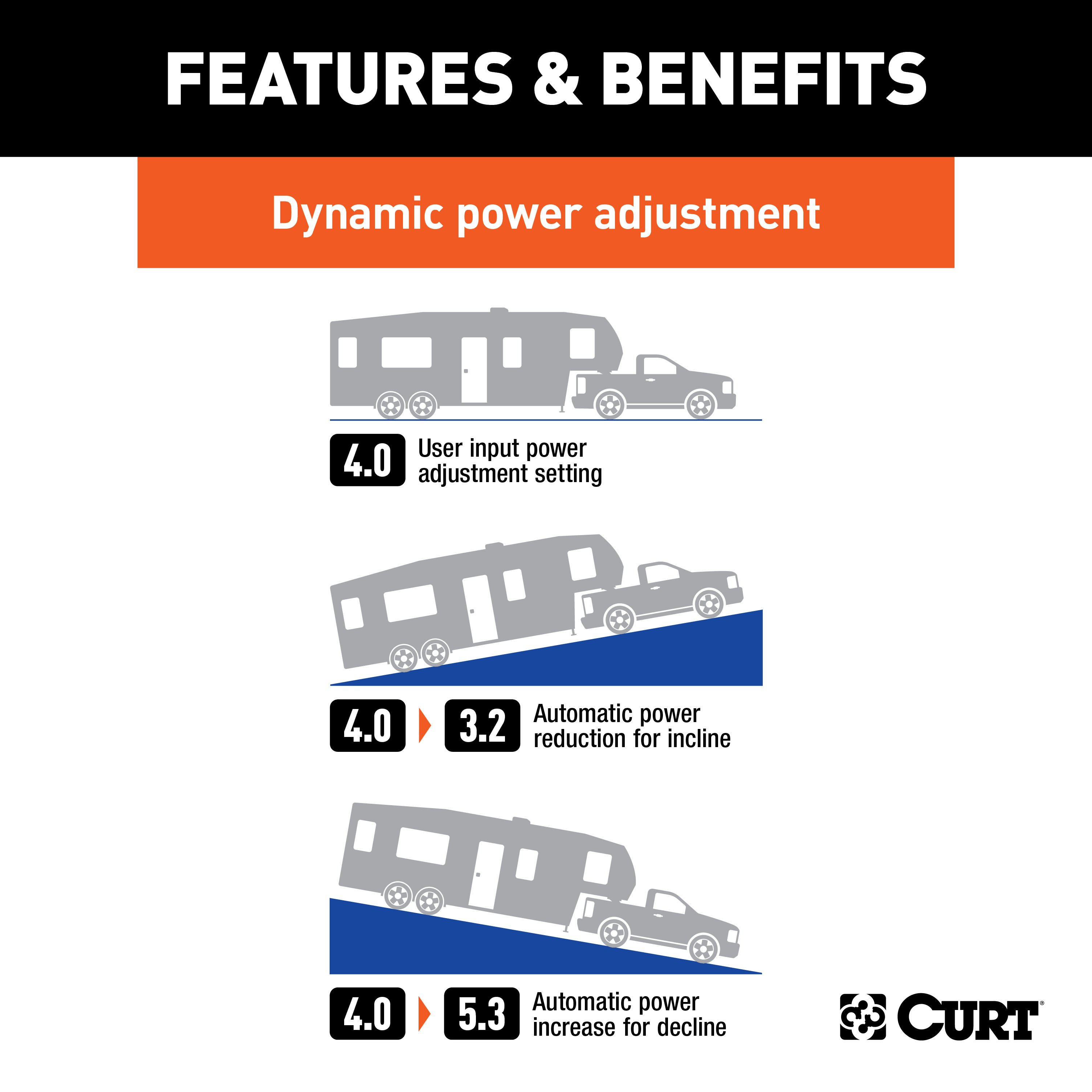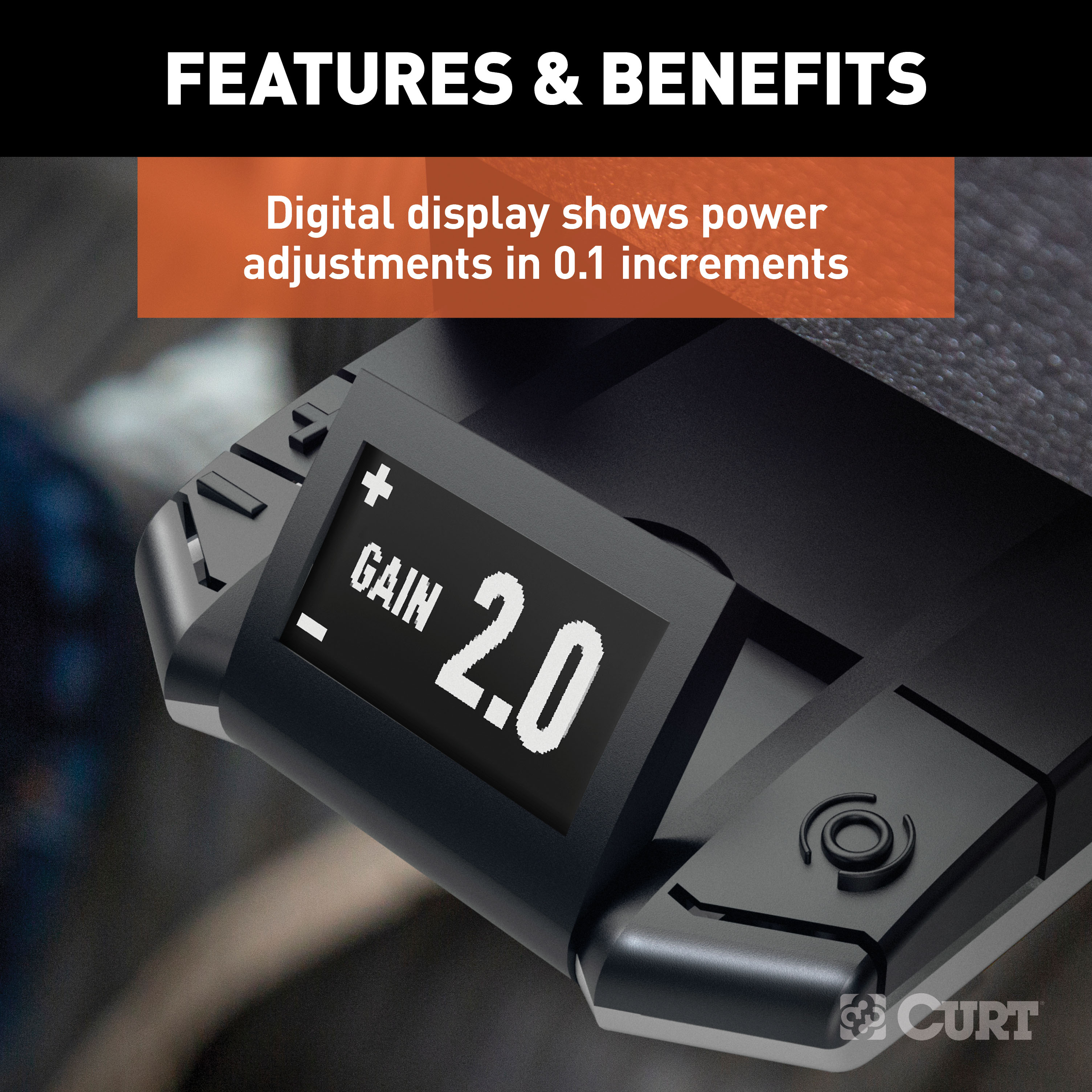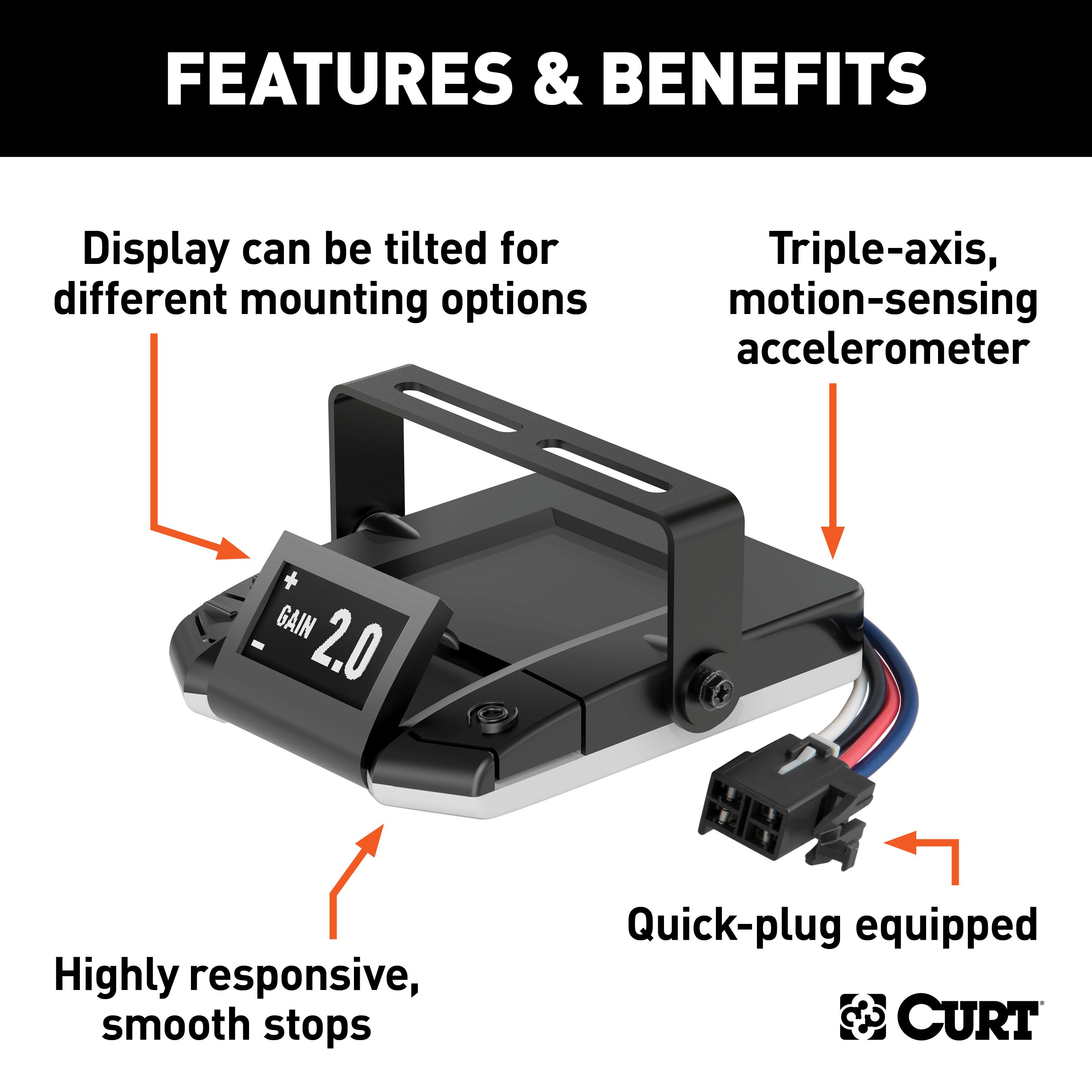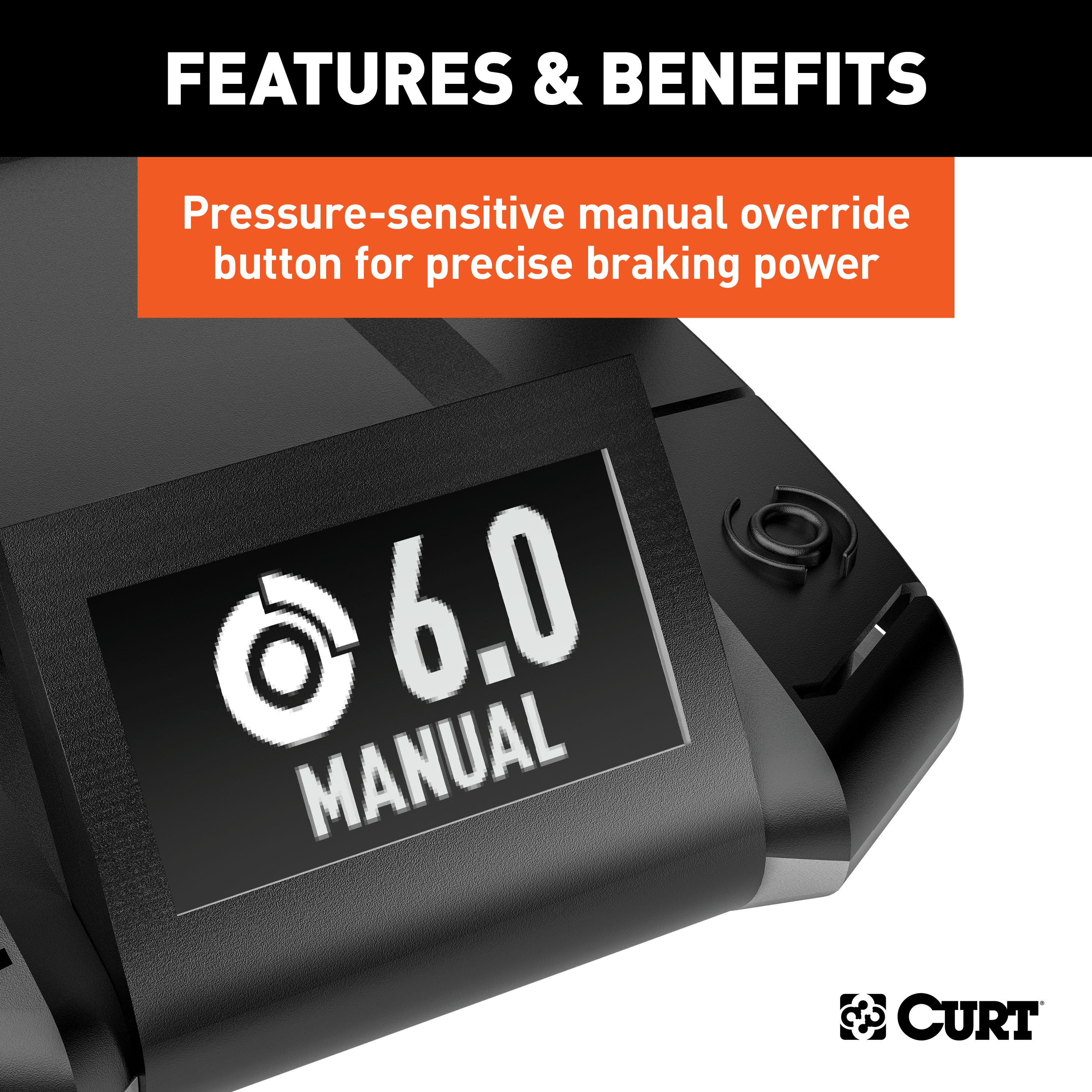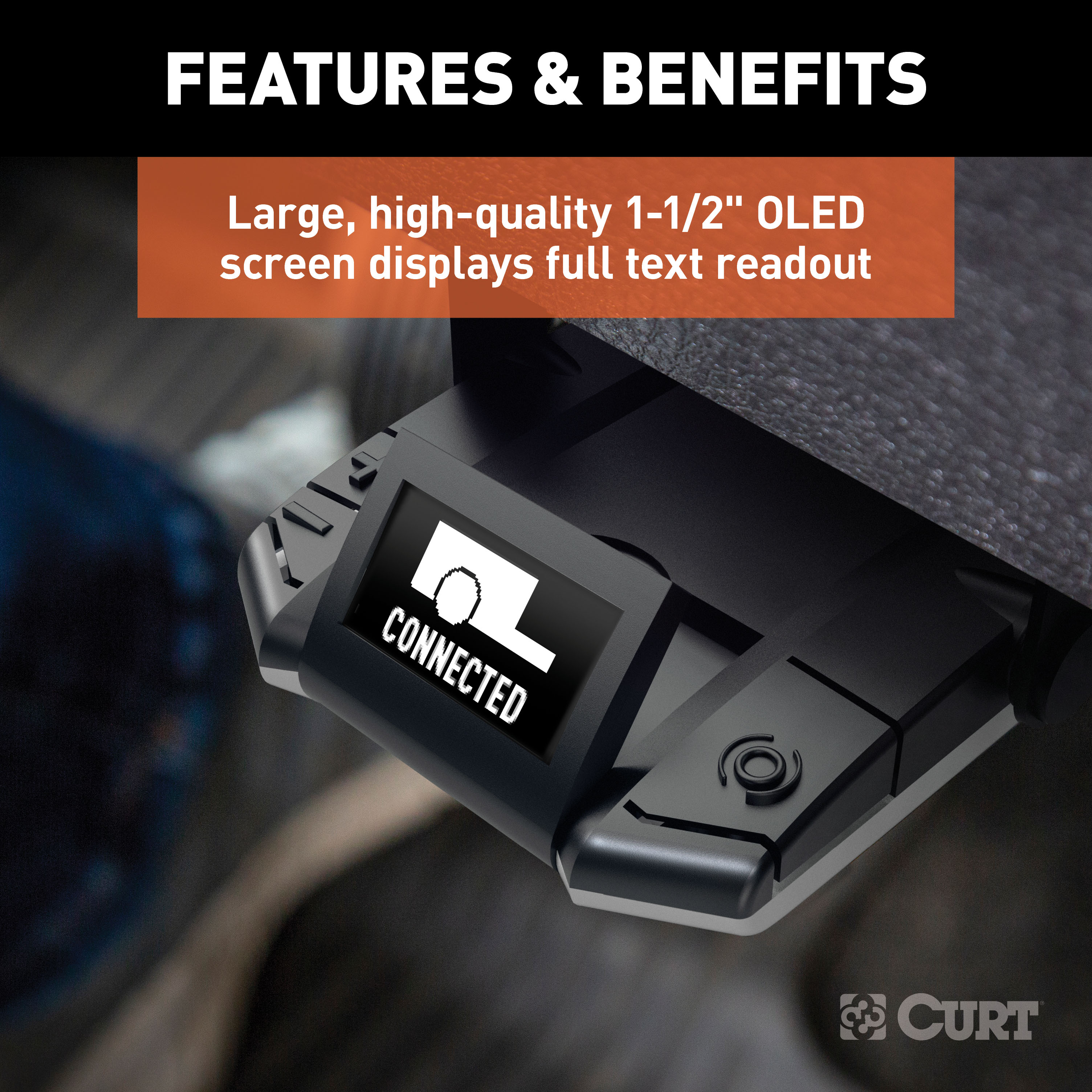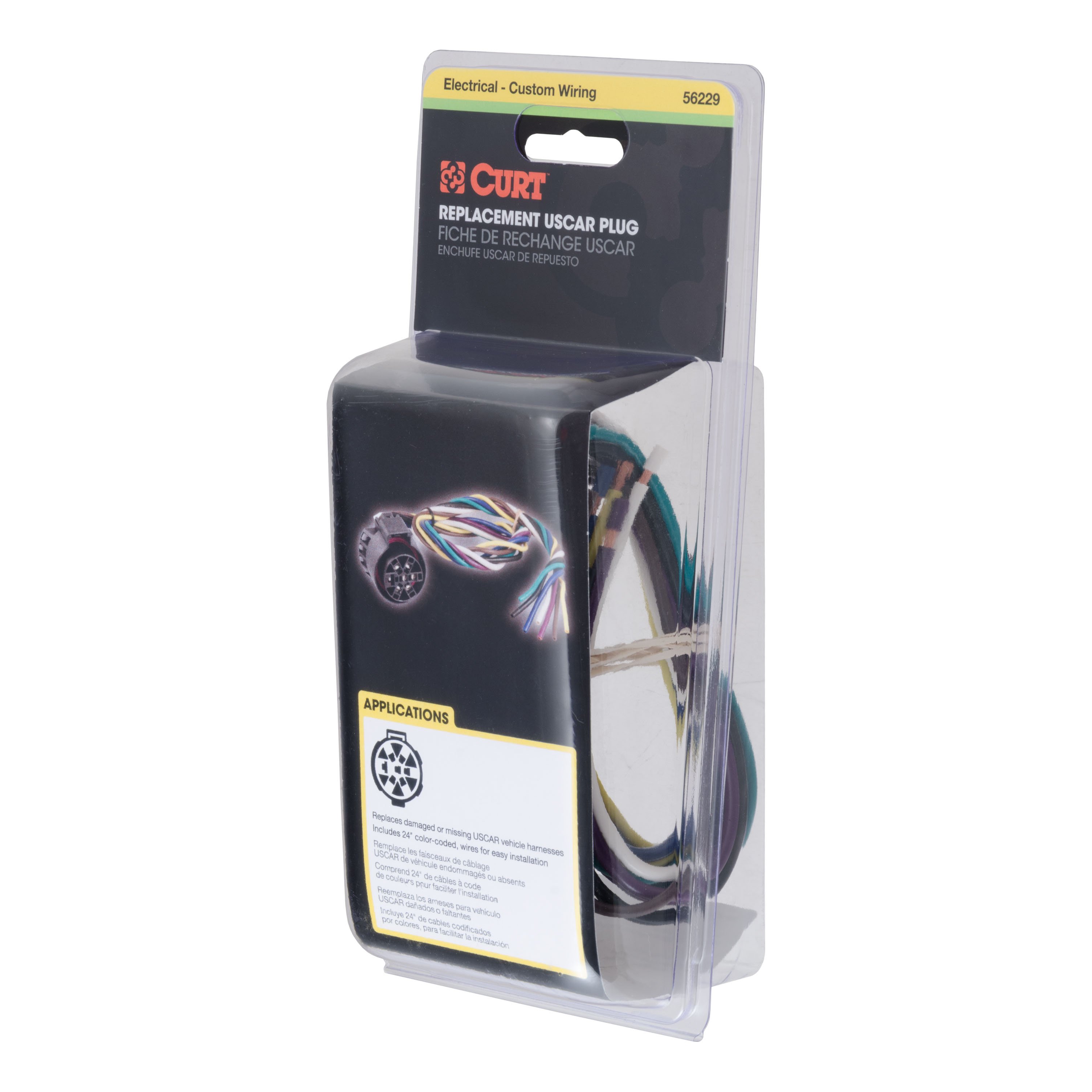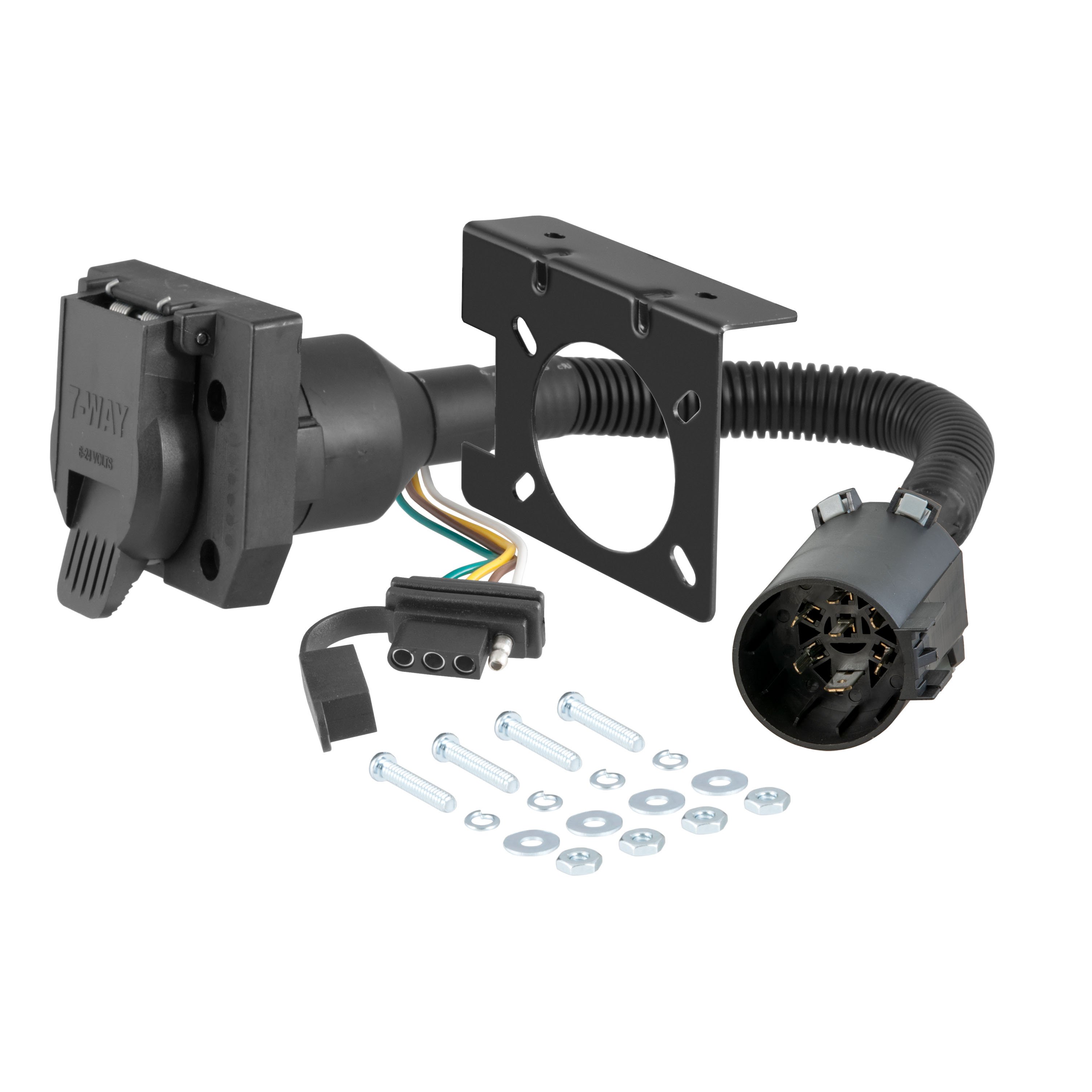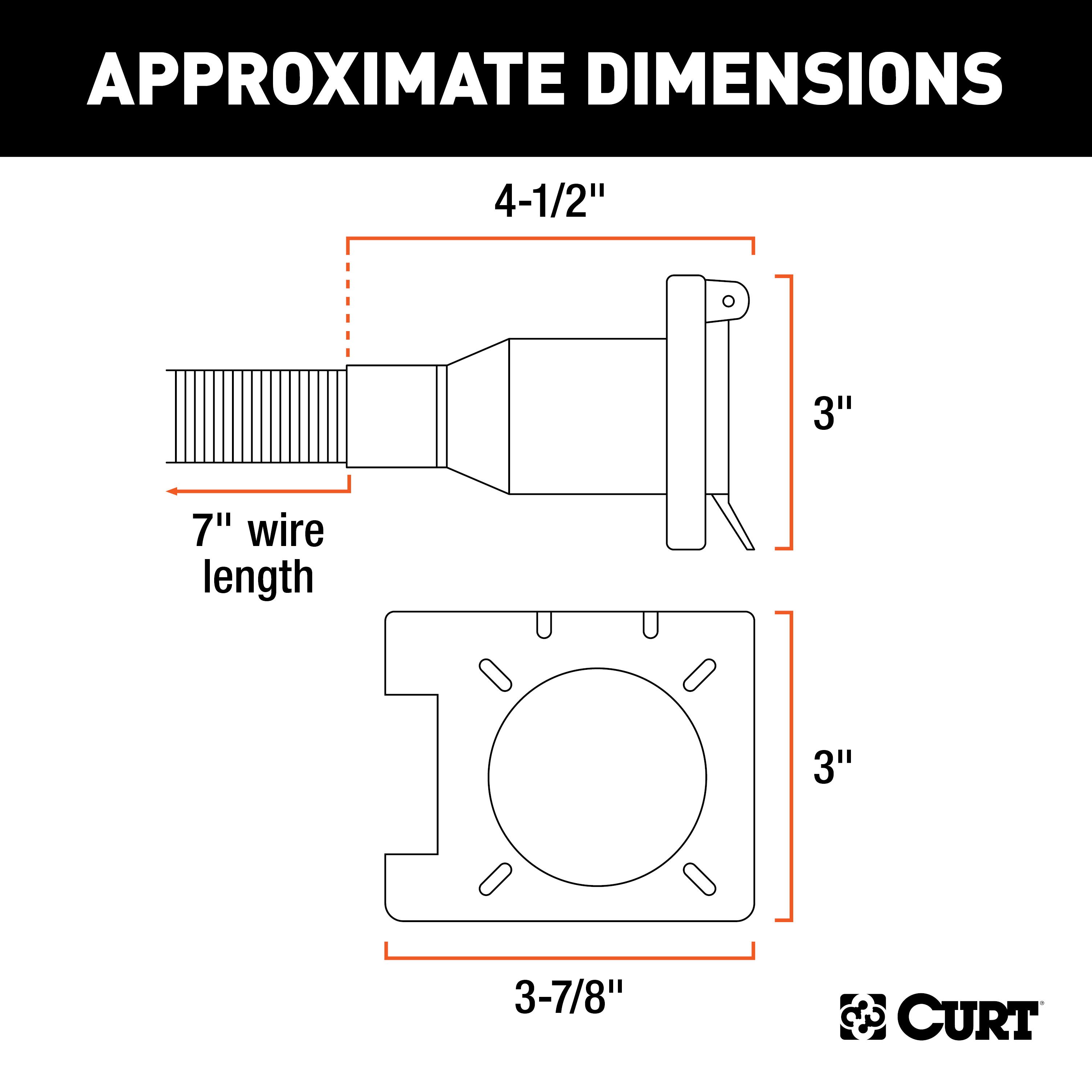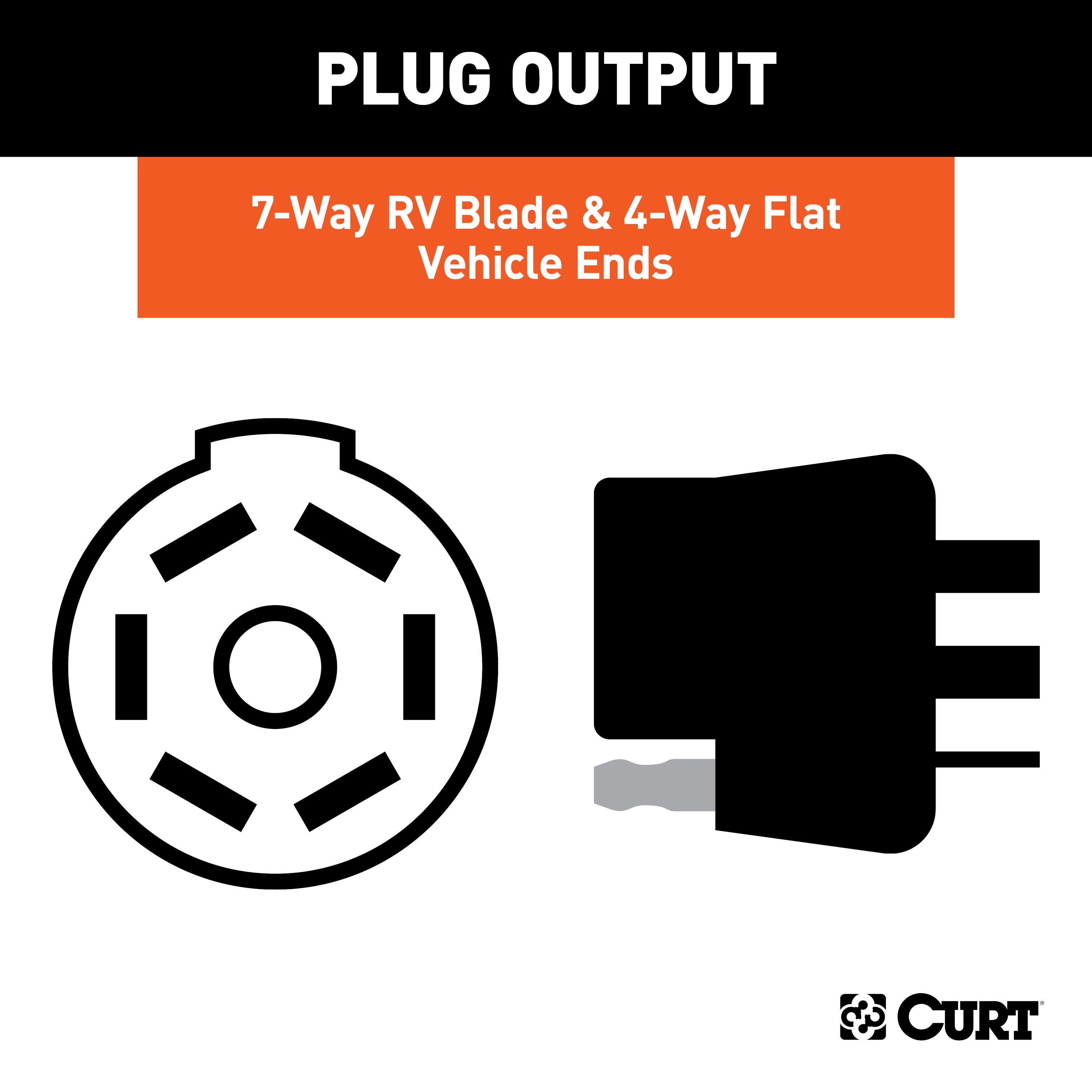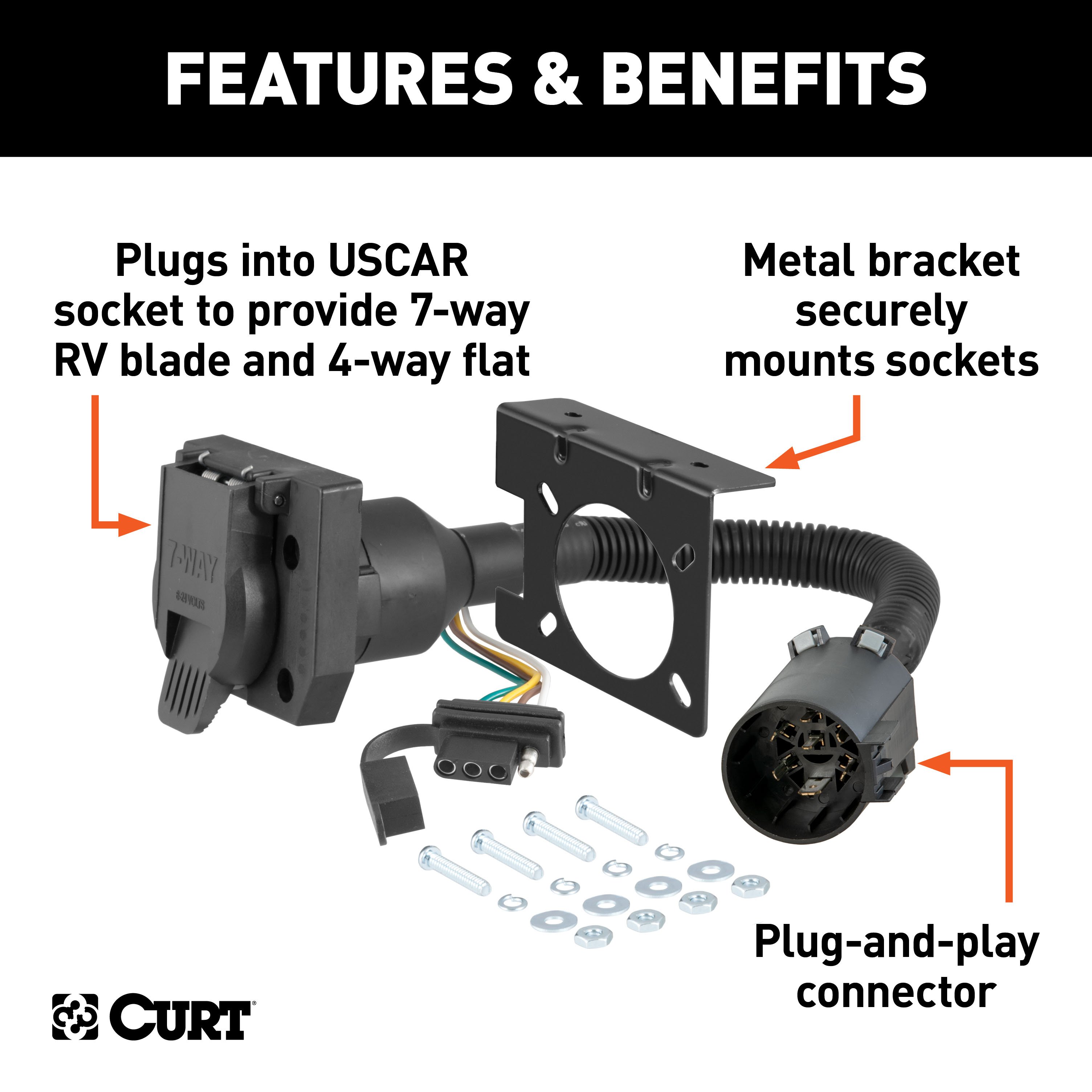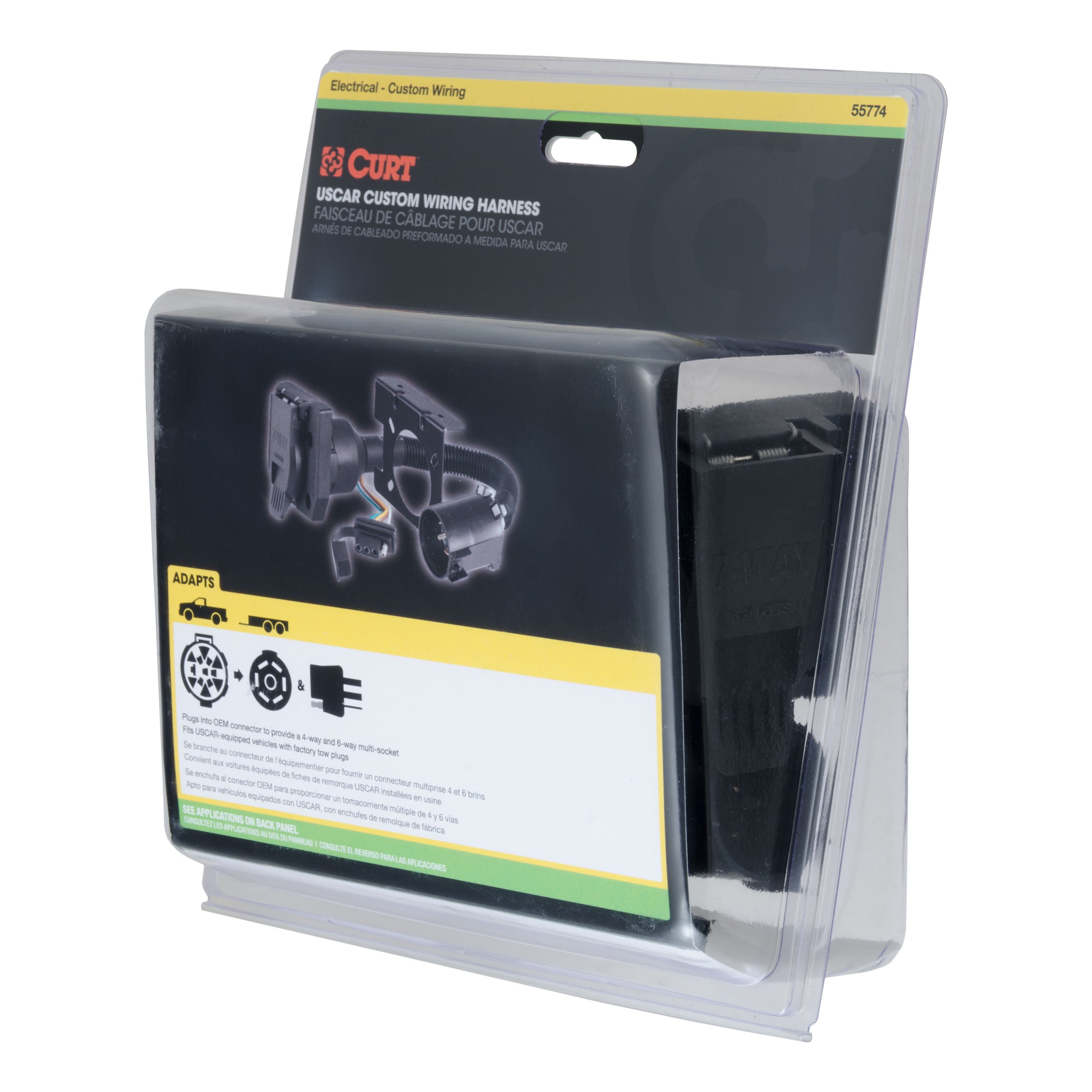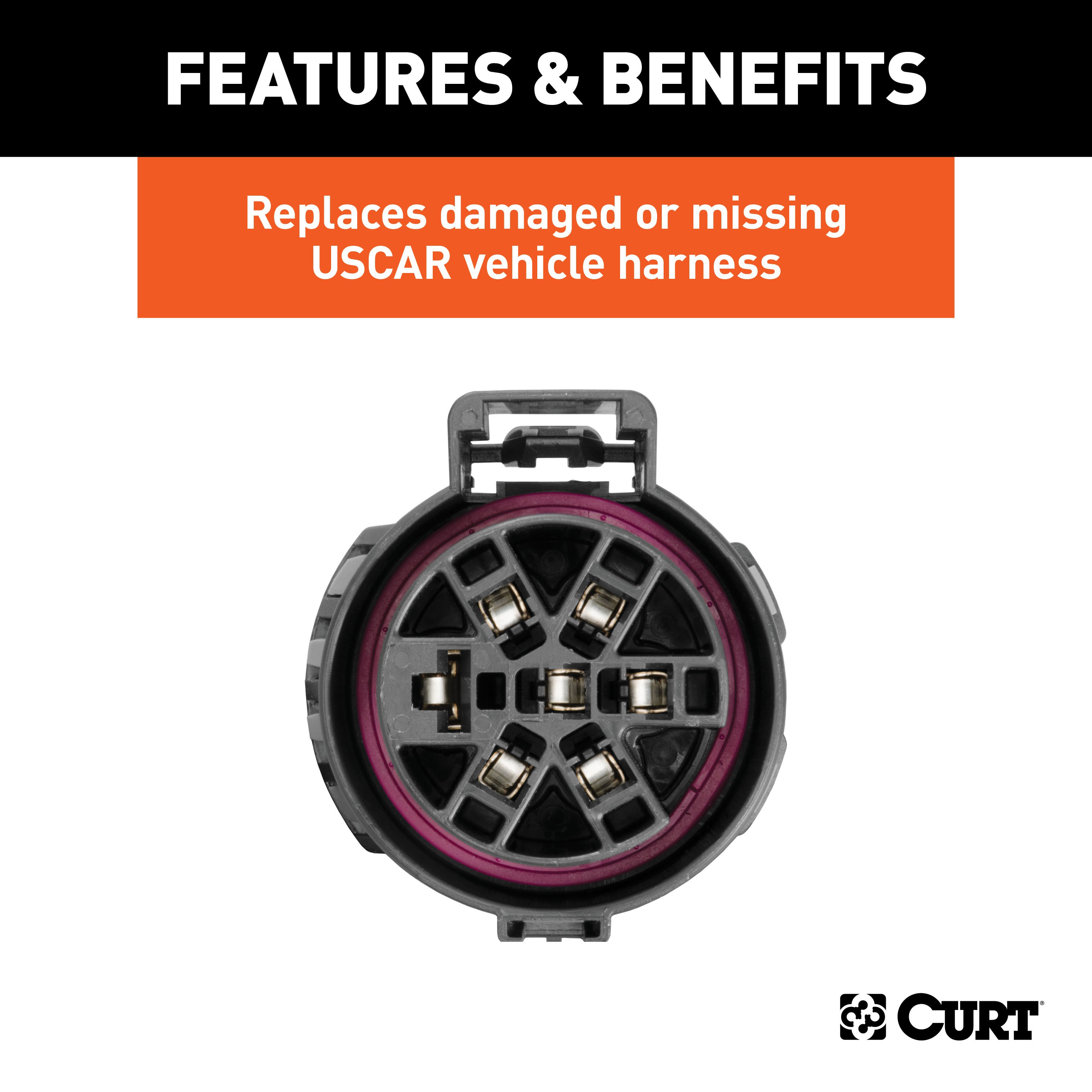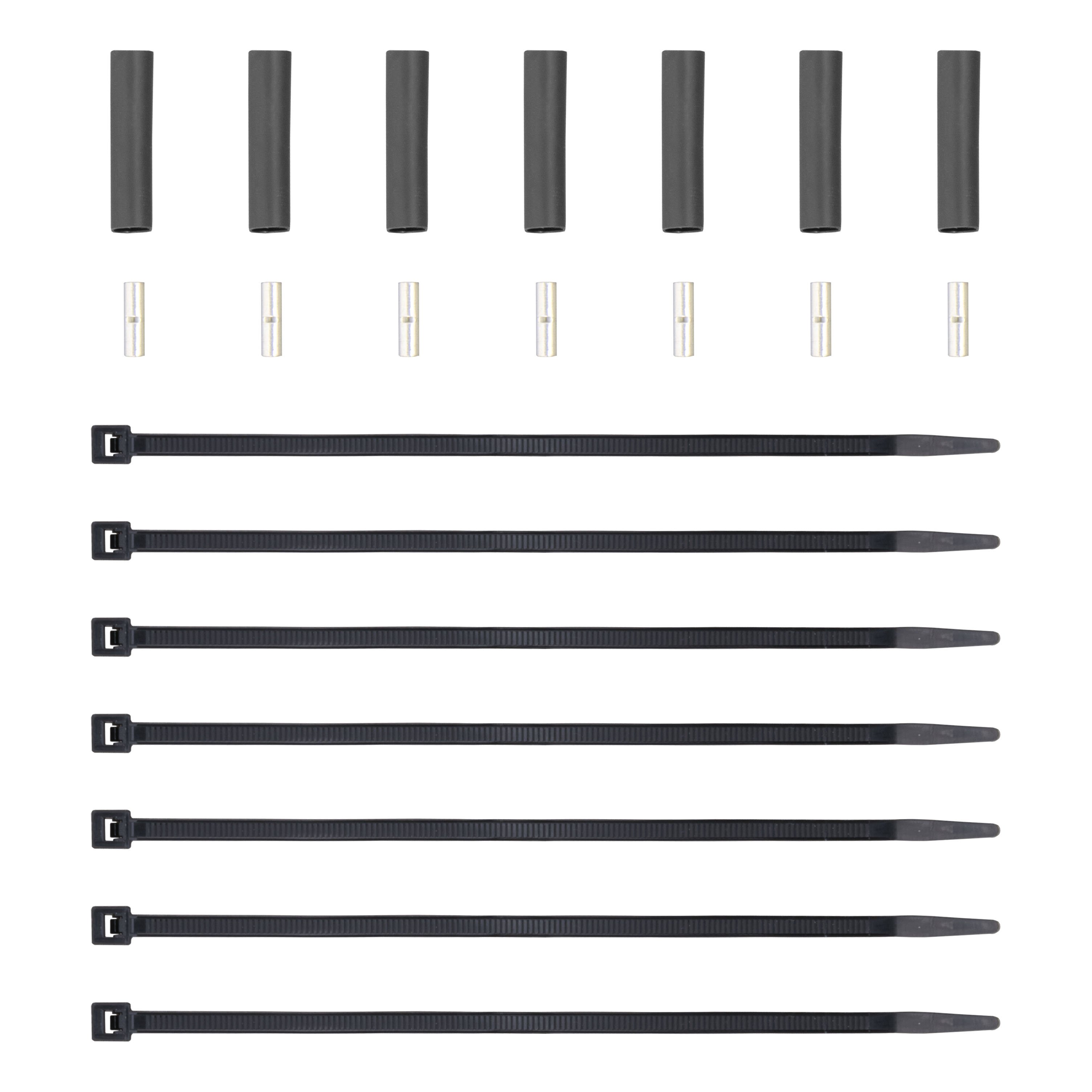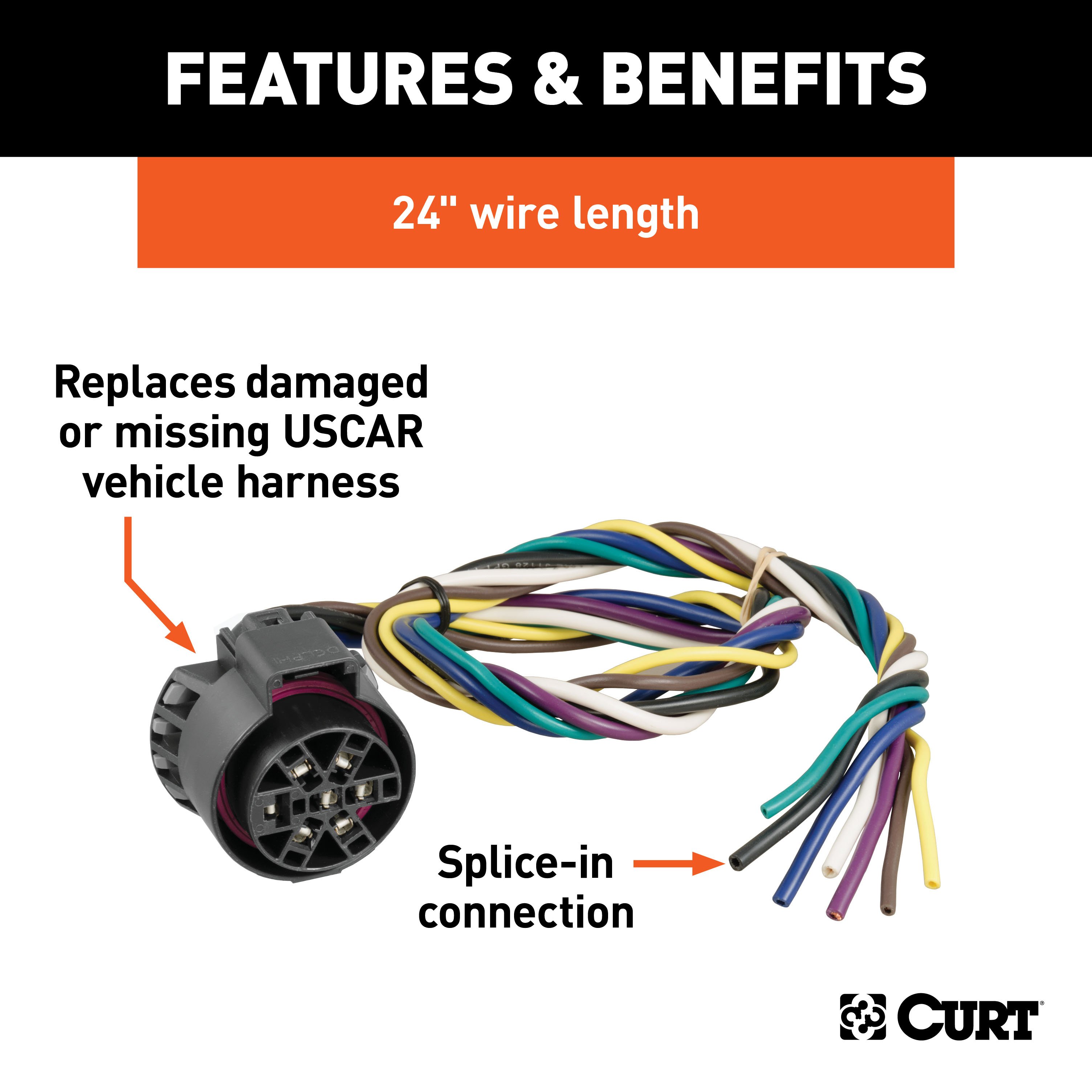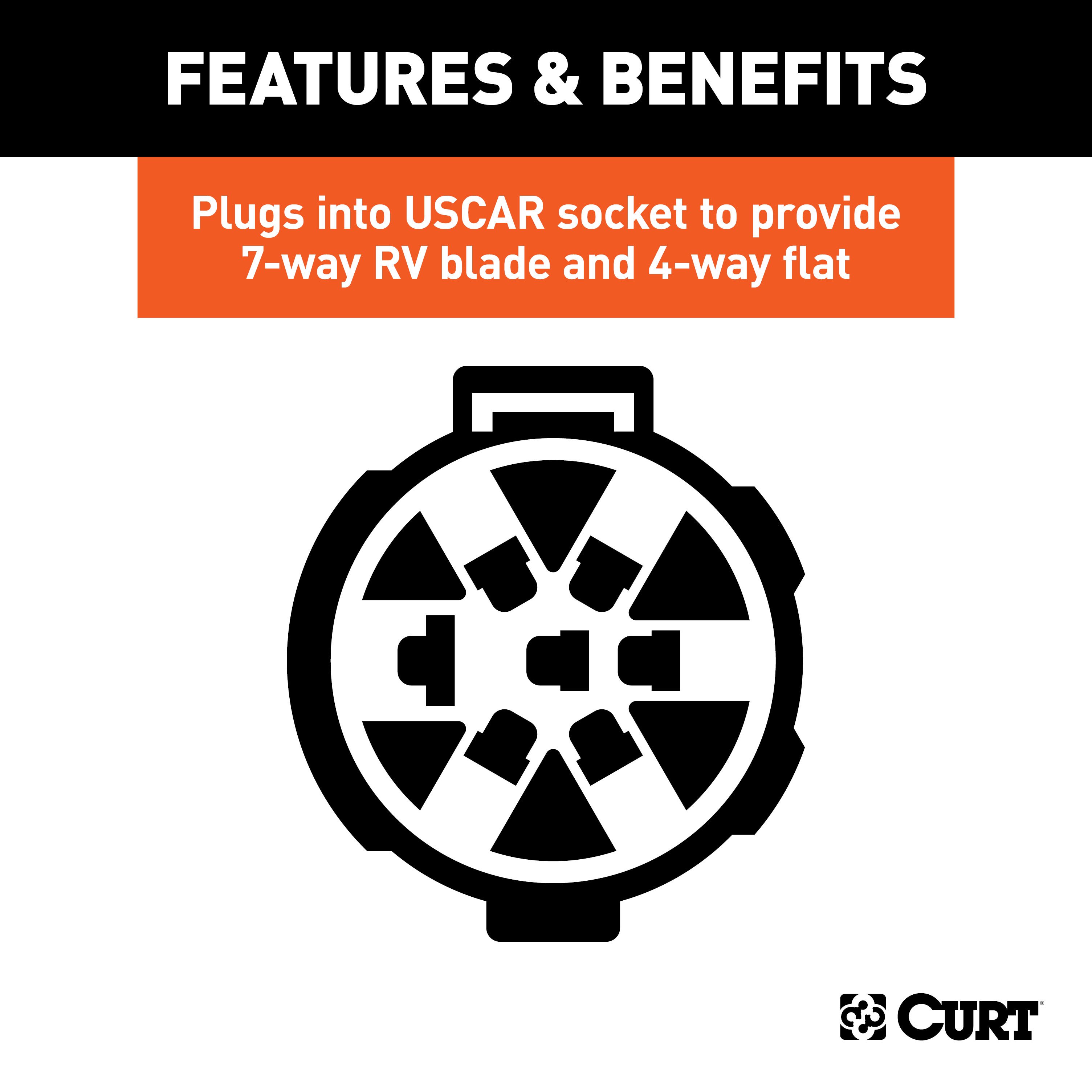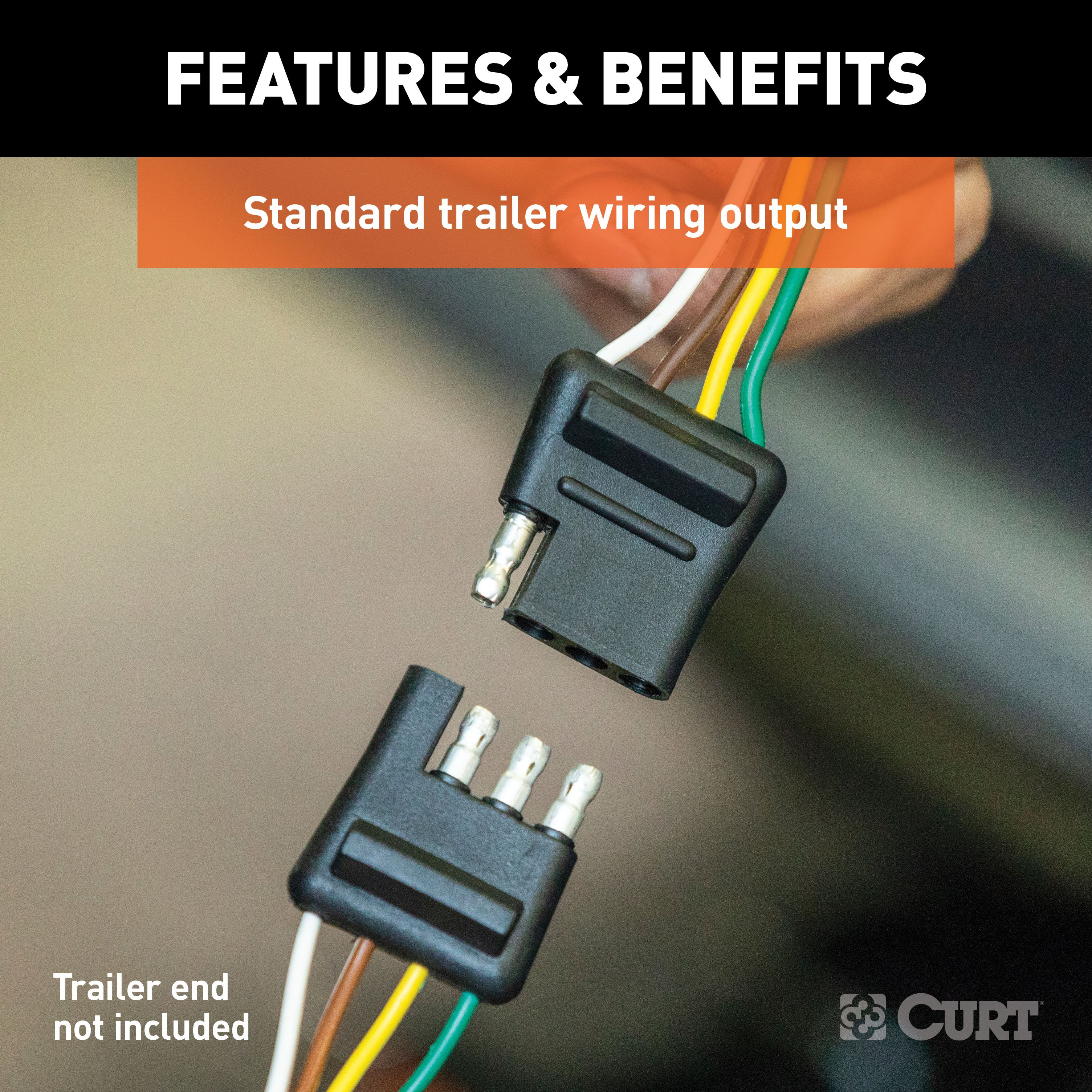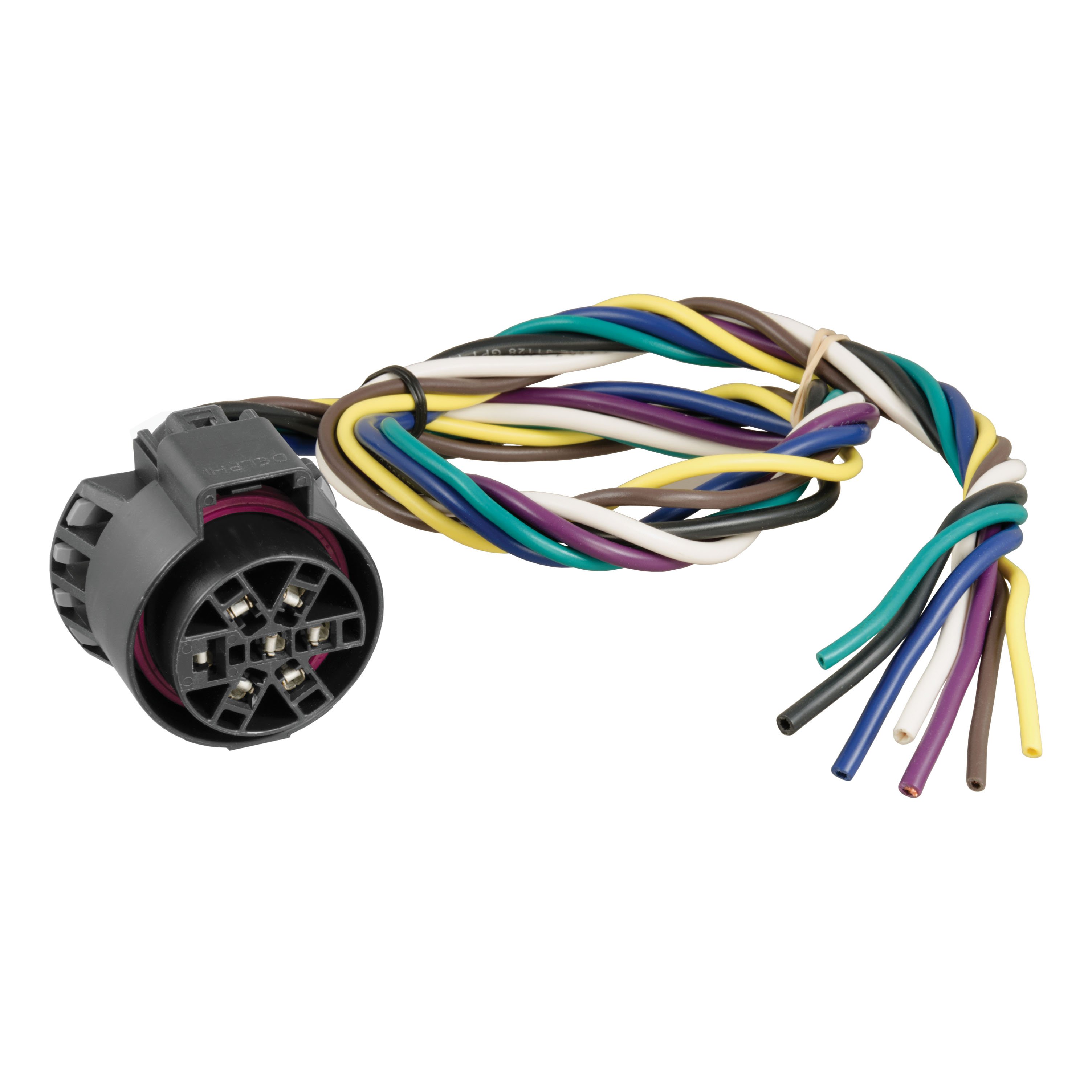Product Details
- Brand: Curt
- Model: 13099 51312 56229 55774 45042 51160-CH1291
- Includes: Class 3 Trailer Tow Hitch, Replacement USCAR Socket with 24" Wires, Dual-Output 7 & 4-Way Connector Plugs into USCAR, Trailer Brake Controller Harness, Loaded Ball Mount with 2-5/16" Ball 2" Shank, Assure Proportional Trailer Brake Controller with Dynamic Screen
Compatibility Chart
Description
Get Expert Help
For 1992-1993 Ford F150 Tow Package Camp n' Field Trailer Hitch + Brake Controller Curt Assure 51160 Proportional Up To 4 Axles + 7 Way Trailer Wiring Plug & 2-5/16" ball 4 inch drop Fits w/ 10" Step Bumper Curt 13099 2 inch Tow Receiver Install Notes
Installation Instructions for 1963-1996 Ford Trucks (All Full Size, Old Body Style Only) and 1970-2000 Chevrolet & GMC Pickup (Full Size with 10" Step Bumper)
Part Numbers:
- 13099
Tools Required:
- Wrenches: 3/4"
- Drill Bits: 17/32"
Step-by-Step Instructions:
-
Remove Spare Tire:
- Remove the spare tire from the vehicle.
- Note: To retain under-box tire stowage, the spare tire carrier may need to be relocated and/or modified.
- Note: On some Ford Pickup models equipped with a 16" spare tire, it may be necessary to adjust the spare tire cradle to retain under-vehicle tire stowage after hitch installation.
-
Measure Vehicle Frame Width:
- For 34" frames, position the side bracket with mounting flanges pointing inboard.
- For 38" frames, position the side bracket with mounting flanges pointing outboard.
-
Position Side Bracket:
- Lift the bracket into position, placing the rearmost mounting tab at the end of the vehicle frame.
- Clamp the bracket to the frame.
-
Drill Mounting Holes:
- Using the slotted holes in the bracket as a guide, drill six 17/32" diameter holes in the frame.
- Tip: Start with a smaller bit and work up to 17/32".
- Note: In some cases, existing holes in the frame may be used.
-
Install Side Bracket Fasteners:
- Install side bracket mounting fasteners as shown, placing spacers inside the frame.
- Do not tighten at this time.
-
Install Crosstube Assembly:
- Install the crosstube assembly into the side brackets.
- Install 7/16" x 1 1/2" carriage bolts and 7/16" flange nuts.
-
Torque Fasteners:
- Torque all 1/2" fasteners to 110 lb.-ft.
- Torque all 7/16" fasteners to 70 lb.-ft.
Hardware List:
- 6 Carriage Bolts, 1/2"-13 UNC x 1-3/4", Grade 8, Yellow Zinc
- 6 Square Hole Spacers, 0.250" x 1.50" x 2.00"
- 6 Serrated Flange Nuts, 1/2"-13 UNC, Grade 8, Yellow Zinc
- 8 Serrated Flange Nuts, 7/16"-14 UNC, Grade 8, Yellow Zinc
- 8 Carriage Bolts, 7/16"-14 UNC x 1-1/2", Grade 8, Yellow Zinc
Safety Notes:
- Warning: Do not exceed the vehicle manufacturer's recommended towing capacity.
- Periodically check this receiver hitch to ensure that all fasteners are tight and that all structural components are sound.
Specifications:
- Gross Load Capacity (Weight Carrying Hitch): 6,000 lbs. Trailer Weight & 600 lbs. Tongue Weight
- Gross Load Capacity (Weight Distribution Hitch): 10,000 lbs. Trailer Weight & 1,000 lbs. Tongue Weight
- Hitch Weight: 58 lbs.
- Install Time: 40 minutes
Note: Curt Manufacturing Inc. warrants this product to be free of defects in material and/or workmanship at the time of retail purchase by the original purchaser. If the product is found to be defective, Curt Manufacturing Inc. may repair or replace the product, at their option, when the product is returned, prepaid, with proof of purchase. Alteration to, misuse of, or improper installation of this product voids the warranty. Curt Manufacturing Inc.'s liability is limited to repair or replacement of products found to be defective and specifically excludes liability for incidental or consequential loss or damage.
Installation Instructions for 1963-1996 Ford Trucks (All Full Size, Old Body Style Only) and 1970-2000 Chevrolet & GMC Pickup (Full Size with 10" Step Bumper)
Part Numbers:
- 13099
Tools Required:
- Wrenches: 3/4"
- Drill Bits: 17/32"
Step-by-Step Instructions:
Step 1: Remove Spare Tire:
- Remove the spare tire from the vehicle.
- Note: To retain under-box tire stowage, the spare tire carrier may need to be relocated and/or modified.
- Note: On some Ford Pickup models equipped with a 16" spare tire, it may be necessary to adjust the spare tire cradle to retain under-vehicle tire stowage after hitch installation.
Step 2: Measure Vehicle Frame Width:
- For 34" frames, position the side bracket with mounting flanges pointing inboard.
- For 38" frames, position the side bracket with mounting flanges pointing outboard.
Step 3: Position Side Bracket:
- Lift the bracket into position, placing the rearmost mounting tab at the end of the vehicle frame.
- Clamp the bracket to the frame.
Step 4: Drill Mounting Holes:
- Using the slotted holes in the bracket as a guide, drill six 17/32" diameter holes in the frame.
- Tip: Start with a smaller bit and work up to 17/32".
- Note: In some cases, existing holes in the frame may be used.
Step 5: Install Side Bracket Fasteners:
- Install side bracket mounting fasteners as shown, placing spacers inside the frame.
- Do not tighten at this time.
Step 6: Install Crosstube Assembly:
- Install the crosstube assembly into the side brackets.
- Install 7/16" x 1 1/2" carriage bolts and 7/16" flange nuts.
Step 7: Torque Fasteners:
- Torque all 1/2" fasteners to 110 lb.-ft.
- Torque all 7/16" fasteners to 70 lb.-ft.
Hardware List:
- 6 Carriage Bolts, 1/2"-13 UNC x 1-3/4", Grade 8, Yellow Zinc
- 6 Square Hole Spacers, 0.250" x 1.50" x 2.00"
- 6 Serrated Flange Nuts, 1/2"-13 UNC, Grade 8, Yellow Zinc
- 8 Serrated Flange Nuts, 7/16"-14 UNC, Grade 8, Yellow Zinc
- 8 Carriage Bolts, 7/16"-14 UNC x 1-1/2", Grade 8, Yellow Zinc
Safety Notes:
- Warning: Do not exceed the vehicle manufacturer's recommended towing capacity.
- Periodically check this receiver hitch to ensure that all fasteners are tight and that all structural components are sound.
Specifications:
- Gross Load Capacity (Weight Carrying Hitch): 6,000 lbs. Trailer Weight & 600 lbs. Tongue Weight
- Gross Load Capacity (Weight Distribution Hitch): 10,000 lbs. Trailer Weight & 1,000 lbs. Tongue Weight
- Hitch Weight: 58 lbs.
- Install Time: 40 minutes
General Information:
Attention:
This is a summary of the installation procedure. For complete installation instructions, including diagrams and detailed information from the manufacturer, please download the full installation PDF.
Technical Support:
For technical support and assistance, our team of experts is available to help. You can reach our tech support by visiting www.trailerjacks.com or calling 877-869-6690.
Warranty Information:
For complete warranty instructions, please download the full installation PDF.
Installation Instructions for USCAR Replacement Socket and 7-Way Connector
Tools Required:
- Phillips Head Screwdriver
- Adjustable Wrench
- Test Light or Multimeter
- Wire Crimpers
- Cable Ties (optional)
Overview:
This guide provides instructions for installing a USCAR replacement socket and a 7-way connector. The USCAR socket connects to your vehicle’s wiring harness and serves as the interface for the 7-way connector, enabling trailer lighting and braking functions.
Step-by-Step Instructions:
Part 1: Install the USCAR Replacement Socket
-
Locate the Vehicle Wiring Harness:
- Identify the vehicle body harness, typically located along the driver-side frame rail or under the bed near the taillights.
- Use a test light or multimeter to confirm the function of each circuit in the harness:
- White Wire: Ground (-)
- Black Wire: Power (+)
- Blue Wire: Brake Controller Output
- Brown Wire: Tail Lights
- Yellow Wire: Left Turn Signal and Brake
- Green Wire: Right Turn Signal and Brake
- Red Wire: Auxiliary or Reverse Lights
-
Connect the Wires:
- Match the wires from the USCAR replacement socket harness to the corresponding vehicle harness wires based on function, not color.
- Use the provided splice connectors or butt connectors to secure each connection.
- For thicker gauge wires, use the yellow connectors included in the kit.
- Ensure the white ground wire is connected to a clean, solid grounding point on the vehicle’s frame using a self-tapping screw and ring terminal.
-
Mount the USCAR Socket:
- Attach the USCAR socket to the mounting bracket using the screws and nuts provided.
- Secure the mounting bracket to the hitch or vehicle frame using the provided hardware.
-
Test the USCAR Socket:
- Use a test light or trailer to verify the socket’s functionality before proceeding.
Part 2: Install the 7-Way Connector
-
Plug in the 7-Way Connector:
- Align the connector from the 7-way assembly with the USCAR socket and push it in until it clicks securely.
-
Mount the 7-Way Connector:
- Attach the 7-way connector to the bracket using the provided screws and nuts.
- Ensure the spring-loaded cover is facing upward to protect the connector from water and debris.
-
Secure the Wiring:
- Use cable ties to secure any loose wiring to prevent damage or interference with vehicle components.
-
Test the 7-Way Connector:
- Verify each function of the 7-way connector using a test light or trailer:
- Brown Wire: Tail Lights
- Yellow Wire: Left Turn Signal and Brake
- Green Wire: Right Turn Signal and Brake
- Blue Wire: Trailer Brake Control
- Black Wire: Auxiliary Power
- Red Wire: Reverse Lights
- White Wire: Ground
- Verify each function of the 7-way connector using a test light or trailer:
Notes:
- Always match wires by function, not color, to ensure proper connections.
- Confirm all circuits are functional before securing the wiring permanently.
- Use cable ties to neatly bundle and secure the wiring.
Warning: Incorrect wiring or overloaded circuits can cause electrical damage or fire. Test all connections thoroughly before towing.
Installation Instructions for USCAR Replacement Socket and 7-Way Connector
Tools Required:
- Phillips Head Screwdriver
- Adjustable Wrench
- Test Light or Multimeter
- Wire Crimpers
- Cable Ties (optional)
Overview:
This guide provides instructions for installing a USCAR replacement socket and a 7-way connector. The USCAR socket connects to your vehicle’s wiring harness and serves as the interface for the 7-way connector, enabling trailer lighting and braking functions.
Step-by-Step Instructions:
Part 1: Install the USCAR Replacement Socket
-
Locate the Vehicle Wiring Harness:
- Identify the vehicle body harness, typically located along the driver-side frame rail or under the bed near the taillights.
- Use a test light or multimeter to confirm the function of each circuit in the harness:
- White Wire: Ground (-)
- Black Wire: Power (+)
- Blue Wire: Brake Controller Output
- Brown Wire: Tail Lights
- Yellow Wire: Left Turn Signal and Brake
- Green Wire: Right Turn Signal and Brake
- Red Wire: Auxiliary or Reverse Lights
-
Connect the Wires:
- Match the wires from the USCAR replacement socket harness to the corresponding vehicle harness wires based on function, not color.
- Use the provided splice connectors or butt connectors to secure each connection.
- For thicker gauge wires, use the yellow connectors included in the kit.
- Ensure the white ground wire is connected to a clean, solid grounding point on the vehicle’s frame using a self-tapping screw and ring terminal.
-
Mount the USCAR Socket:
- Attach the USCAR socket to the mounting bracket using the screws and nuts provided.
- Secure the mounting bracket to the hitch or vehicle frame using the provided hardware.
-
Test the USCAR Socket:
- Use a test light or trailer to verify the socket’s functionality before proceeding.
Part 2: Install the 7-Way Connector
-
Plug in the 7-Way Connector:
- Align the connector from the 7-way assembly with the USCAR socket and push it in until it clicks securely.
-
Mount the 7-Way Connector:
- Attach the 7-way connector to the bracket using the provided screws and nuts.
- Ensure the spring-loaded cover is facing upward to protect the connector from water and debris.
-
Secure the Wiring:
- Use cable ties to secure any loose wiring to prevent damage or interference with vehicle components.
-
Test the 7-Way Connector:
- Verify each function of the 7-way connector using a test light or trailer:
- Brown Wire: Tail Lights
- Yellow Wire: Left Turn Signal and Brake
- Green Wire: Right Turn Signal and Brake
- Blue Wire: Trailer Brake Control
- Black Wire: Auxiliary Power
- Red Wire: Reverse Lights
- White Wire: Ground
- Verify each function of the 7-way connector using a test light or trailer:
Notes:
- Always match wires by function, not color, to ensure proper connections.
- Confirm all circuits are functional before securing the wiring permanently.
- Use cable ties to neatly bundle and secure the wiring.
Warning: Incorrect wiring or overloaded circuits can cause electrical damage or fire. Test all connections thoroughly before towing.
For complete installation instructions, including diagrams and detailed information from the manufacturer, please download the full installation PDF.
For technical support and assistance, our team of experts is available to help. You can reach our tech support by visiting www.trailerjacks.com or calling 877-869-6690.
Installation Instructions for Ford Bronco and F-Series
Part Numbers:
- 51312
- 51313
Wiring Access Location:
- BH1 - Under dash, left of steering column, near emergency brake pedal
Step-by-Step Instructions:
Step 1: Locate the vehicle brake control harness connector
- Find the 4-pin vehicle brake control harness connector under the dash, to the left of the steering column.
- It will be taped to another harness near the emergency brake pedal and will resemble the CURT brake control harness.
Step 2: Connect the CURT harness to the vehicle connector
- Insert the CURT brake control harness connector into the vehicle connector.
- Ensure the connector is fully inserted and the locking tabs are secure.
Step 3: Connect to the brake control unit
- Attach the brake control harness's black connector to the brake control's quick plug connector.
- Secure the harness using the provided cable ties, avoiding pinch points.
Step 4: Mount and test the brake control unit
- Mount the brake control unit as directed in its user manual.
- Perform the recommended test procedures to verify functionality.
Hardware List:
- (1) CURT brake control harness
- (2) Cable ties
Specifications:
- Compatible Vehicles:
- Ford Bronco
- Ford F-Series
Installation Instructions for Vehicles with BH1 Wiring Location
Part Numbers:
- 51312
- 51313
Wiring Access Location:
- BH1 - Under dash, left of steering column, near emergency brake pedal
Step-by-Step Instructions:
Step 1: Locate the vehicle brake control harness connector
- Find the 4-pin vehicle brake control harness connector under the dash, to the left of the steering column.
- It will be taped to another harness near the emergency brake pedal and will resemble the brake control harness.
Step 2: Connect the brake control harness to the vehicle connector
- Insert the brake control harness connector into the vehicle connector.
- Ensure the connector is fully inserted and the locking tabs are secure.
Step 3: Connect to the brake control unit
- Attach the brake control harness's black connector to the brake control's quick plug connector.
- Secure the harness using the provided cable ties, avoiding pinch points.
Step 4: Mount and test the brake control unit
- Mount the brake control unit as directed in its user manual.
- Perform the recommended test procedures to verify functionality.
Hardware List:
- (1) Brake control harness
- (2) Cable ties
Specifications:
- Compatible Vehicles:
- Vehicles with BH1 wiring location
For complete installation instructions, including diagrams and detailed information from the manufacturer, please download the full installation PDF.
For technical support and assistance, our team of experts is available to help. You can reach our tech support by visiting www.trailerjacks.com or calling 877-869-6690.
Installation Instructions for Brake Controller
Product Information:
- Application: For trailers with 2 to 8 brakes
- System: 12-volt negative ground systems
Package Contents:
- (1) Brake Controller Module with Quick Plug
- (1) Mounting Bracket
- (2) Keyed Spacers
- (4) Mounting Bracket Screws
- (1) Quick Reference Card
- (2) Keyed Washers
Tools Required:
- Drill with 1/8" drill bit
- Wire Crimpers
- Wire Cutters
- Phillips Head Screwdriver
Key Features:
- Display for output and sensitivity settings
- Manual trailer braking control
- Switchable manual control options (100% or output setting)
- Brake light activation switch
- Reverse voltage and overload protection
- Compatible with electric and hydraulic trailer brake systems
Warnings and Important Notes:
- The brake controller’s positive and ground wires must connect directly to the vehicle’s battery with 10-gauge stranded wire.
- Avoid mounting near a CB radio or other RF transmitters.
- Disconnect the trailer plug when testing a breakaway switch.
Step-by-Step Installation Instructions:
1. Select the Mounting Location:
- The mounting location should be:
- Within the driver’s reach
- On a solid surface
- Free of obstructions behind the mounting surface
2. Install the Mounting Bracket:
- Position the bracket and mark the mounting holes.
- Drill holes using a 1/8” drill bit.
- Secure the bracket with the provided self-tapping screws (do not overtighten).
3. Attach the Brake Controller:
- Place the keyed spacer and washer on each side of the mounting bracket.
- Slide the brake controller into the bracket and secure it with screws.
4. Wiring the Brake Controller:
- Black Wire (Power Input): Connect to the positive (+) battery terminal through a 30-amp auto-reset circuit breaker.
- White Wire (Ground): Connect directly to the negative (-) battery terminal.
- Red Wire (Stoplight Input): Connect to the stoplight wire that is “hot” only when the brake pedal is pressed.
- Use a test probe to verify the correct wire.
- Blue Wire (Brake Output): Connect to the trailer’s brake control wire through the 7-way connector.
Switch Settings (Manual Control Configuration):
-
Brake Light Activation Switch:
- ON: Activates brake lights when the manual control is used (default).
- OFF: Brake lights remain inactive during manual braking.
-
Manual Brake Output Switch:
- ON: Limits manual braking to the gain (output) setting.
- OFF: Allows 100% braking power regardless of the output setting.
Setup and Calibration:
-
Connect the Trailer:
- Plug the trailer connector into the vehicle’s 7-way outlet.
- The controller will calibrate automatically, displaying "Calibration" followed by "Connected."
-
Set Initial Output and Sensitivity:
- Set the output to 2.0 and sensitivity (load) to 1.0 using the (+) and (-) buttons.
-
Test Drive and Adjust:
- Drive on a level surface at 25 mph.
- Press the brake pedal:
- Increase Output: If trailer braking feels insufficient.
- Decrease Output: If trailer brakes lock up.
- Adjust sensitivity for smoother stops using the (+) and (-) buttons.
Display Indicators:
| Indicator | Description |
|---|---|
| Connected | Trailer connected, standby mode |
| Not Connected | No trailer detected |
| Low Volt | Tow vehicle system voltage is low |
| Overload | Trailer brake system fault detected |
| Short | Stoplight wire shorted to ground |
| Error | Accelerometer error |
| Disconnect | Trailer disconnected |
Troubleshooting Guide:
- Display is Blank: Check power and ground connections.
- Display Shows "Low Volt": Verify vehicle’s battery and charging system.
- "Overload" Error: Inspect the blue wire and trailer brake circuit for shorts.
- No Trailer Brakes: Confirm proper wiring of the trailer connector.
Final Notes:
- Secure all loose wires with cable ties.
- Periodically test the system for proper operation.
- Avoid exceeding the towing vehicle's maximum electrical capacity.
Attention: This is a summary of the installation procedure. For complete installation instructions, including diagrams and detailed information, download the full installation PDF.
For Technical Support: Our team of experts is available to help. You can reach tech support by visiting www.trailerjacks.com or calling 877-869-6690.


























































































